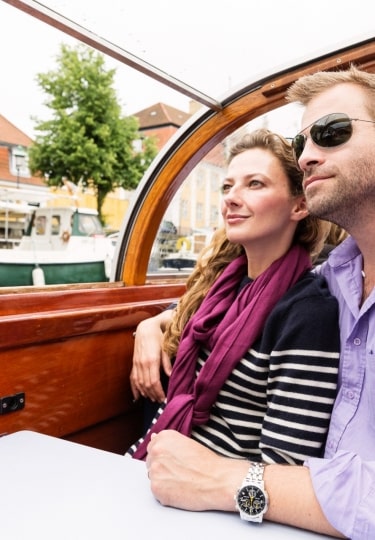Exploring the best things to do in Copenhagen will take you on a journey through Denmark’s fascinating past and forward-thinking present. Numerous royal palaces and world-class museums unveil the country’s history, while innovative architecture and chefs serving New Nordic Cuisine spotlight Copenhagen’s creative soul.
Along the way, you’ll learn about the royal family, the alternative lifestyle of a city-within-a-city, artists, designers, and musicians.
Whether you’d prefer to admire Denmark’s capital from atop a corkscrew-like tower or while kayaking along a canal, or you’d like to experience the city through chic cocktail bars and contemporary art galleries, these are the top things to do in Copenhagen.
Admire the Amalienborg Palace
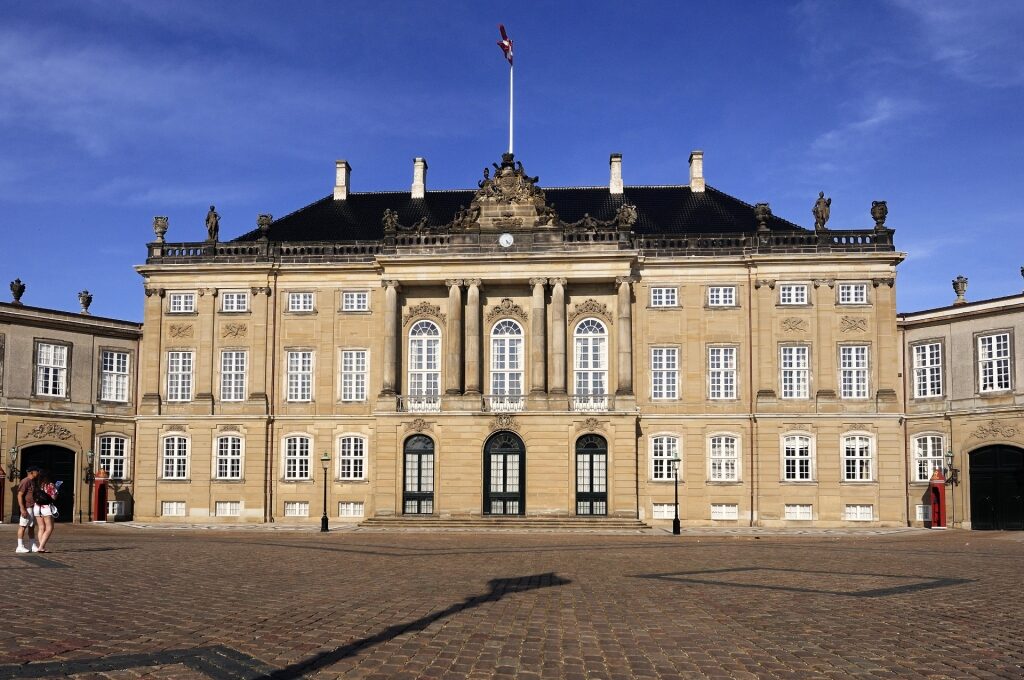
Amalienborg Palace
The Danish Royal Family is one of the world’s oldest monarchies. Beloved Queen Margrethe II was also Europe’s longest-serving sovereign until recently, abdicating to her son, now King Frederik X, in early 2024.
Given these centuries-long regal credentials, it’s unsurprising that Copenhagen is sprinkled with opulent royal palaces and castles that Denmark is known for. There are more than a dozen in and around the city. One of the most central to visit is Amalienborg, the official residence of the royal family. You’ll know the King is in his quarters if you spot a raised flag.
Constructed in the 18th century, Amalienborg is actually four separate yet identical palaces set around an octagonal courtyard. Only one, Christian VIII’s Palace, which hosts the Amalienborg Museum, is open to the public. However, on certain occasions, Christian VII’s Palace can be visited on a guided tour.
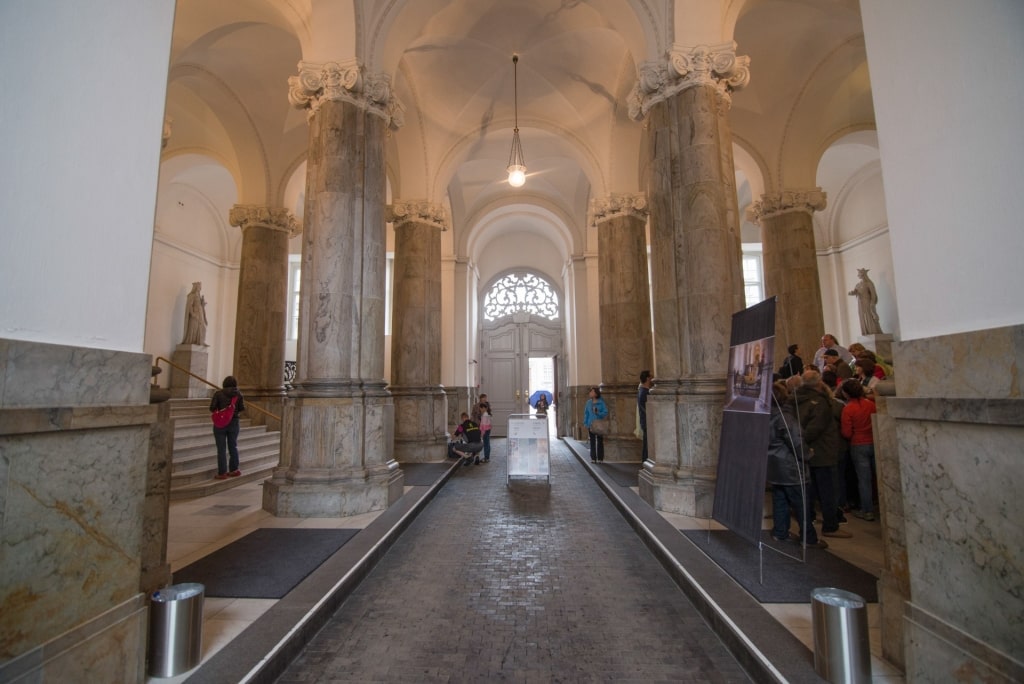
Amalienborg Palace
Inside the Amalienborg Museum, you’ll enjoy a tour through the regal eras. As you wander wide-eyed between opulent halls, reference libraries, and timeless Victorian state rooms, you’ll learn about the Danish Royal Family of today and old. The Fabergé Chamber, where over 100 flamboyant Russian jewelry pieces are on display, is a dazzling highlight.
Watch the Changing of the Guard
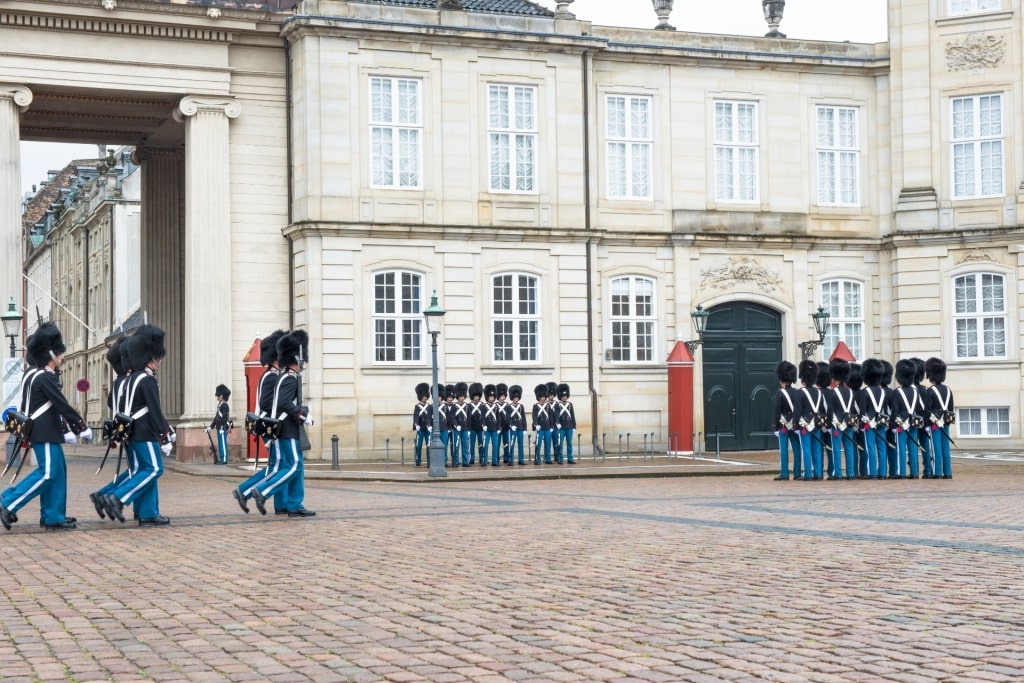
Changing of the Guard in Copenhagen
One of the most memorable things to do in Copenhagen is to watch the changing of the guard. Every two hours, the Royal Guard performs a brief shift change. But time your visit for noon and you’ll witness the whole spectacle.
Commencing at 11.30 am from Rosenborg Castle, the grand procession, in full blue-trousered, bearskin-capped military glory, marches to Amalienborg for the mid-day ceremony. If the King is in residence, the synchronized troops will be accompanied by a full marching band.
Amble Along Nyhavn
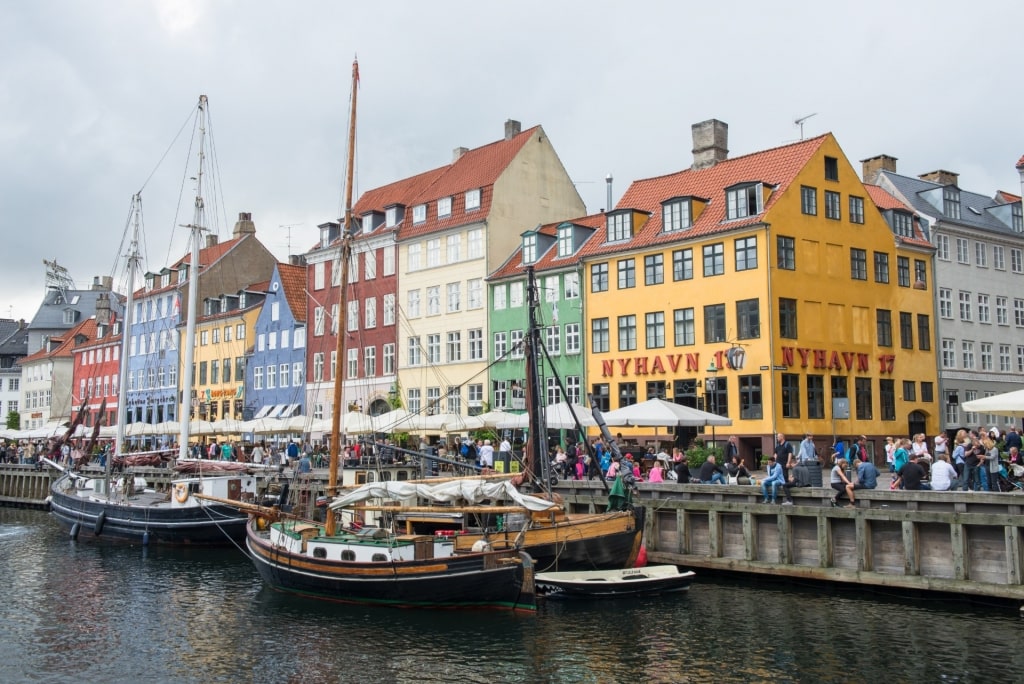
Nyhavn
Copenhagen is known for its canals, and none is more famous than Nyhavn. It’s hard to believe today, but up until the 1960s, this former commercial port was one of the city’s red-light districts. Frequented by sailors from around the world, the towpath pubs were lively meeting places for revelry, pleasure, and letting off steam before setting off on another long voyage.
Nowadays, going to Nyhavn remains one of the best things to do in Copenhagen at night, but for a different kind of nightlife. You’re more likely to hear soulful jazz and sip top-notch cocktails on the well-heeled terraces than encounter rowdy seafarers.
Thankfully, while the clientele may have changed, the architecture hasn’t; this remains one of Copenhagen’s prettiest pockets. Amble along the right bank where the mirror-like waters afford double the appreciation of the colorful 17th-century townhouses. Then cross the bridge for an atmospheric, al fresco lunch.
Stroll the Promenade to the Little Mermaid Statue
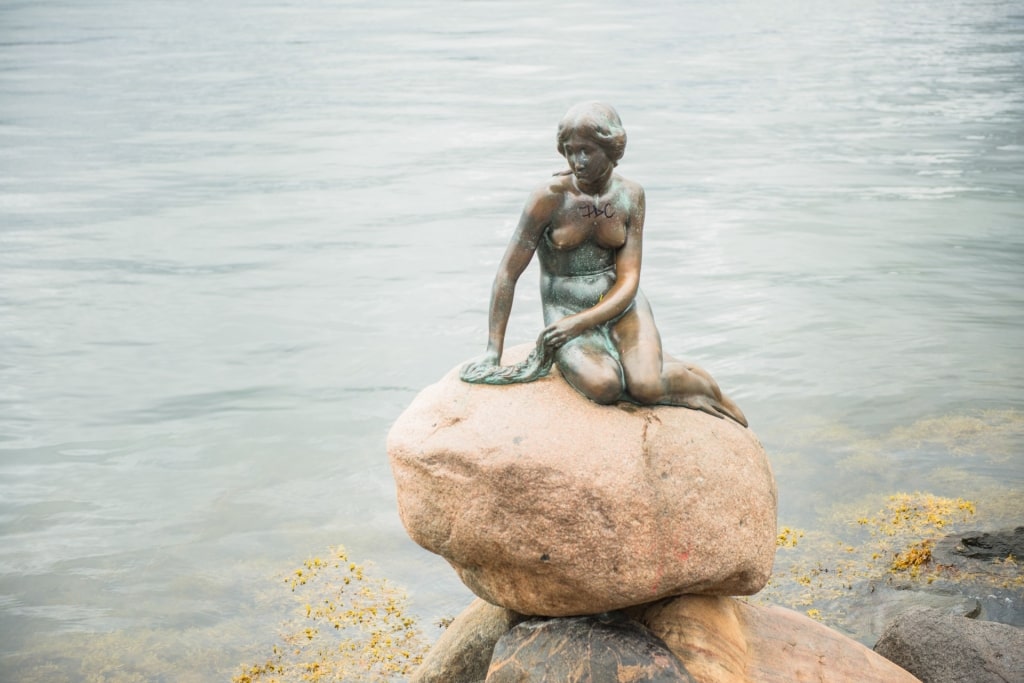
Little Mermaid Statue
Danish author Hans Christian Andersen was a longtime resident of Nyhavn. Over the years, he lived in various homes along the storied canal. Given the characteristics of his 19th-century surroundings, it’s somewhat surprising that his most acclaimed work was “The Little Mermaid”, a children’s fairy tale that has garnered worldwide recognition since its publication in 1837.
Follow the Langelinie promenade, and you’ll soon arrive at one of Copenhagen’s landmarks, honoring the author; the petite statue of The Little Mermaid.
Sculpted by Edvard Eriksen, the bronze and granite model was unveiled in 1913. As in the book, the mermaid perches atop a rock, wistfully scanning the shore for signs of her beloved handsome prince.
Dine in the Meatpacking District
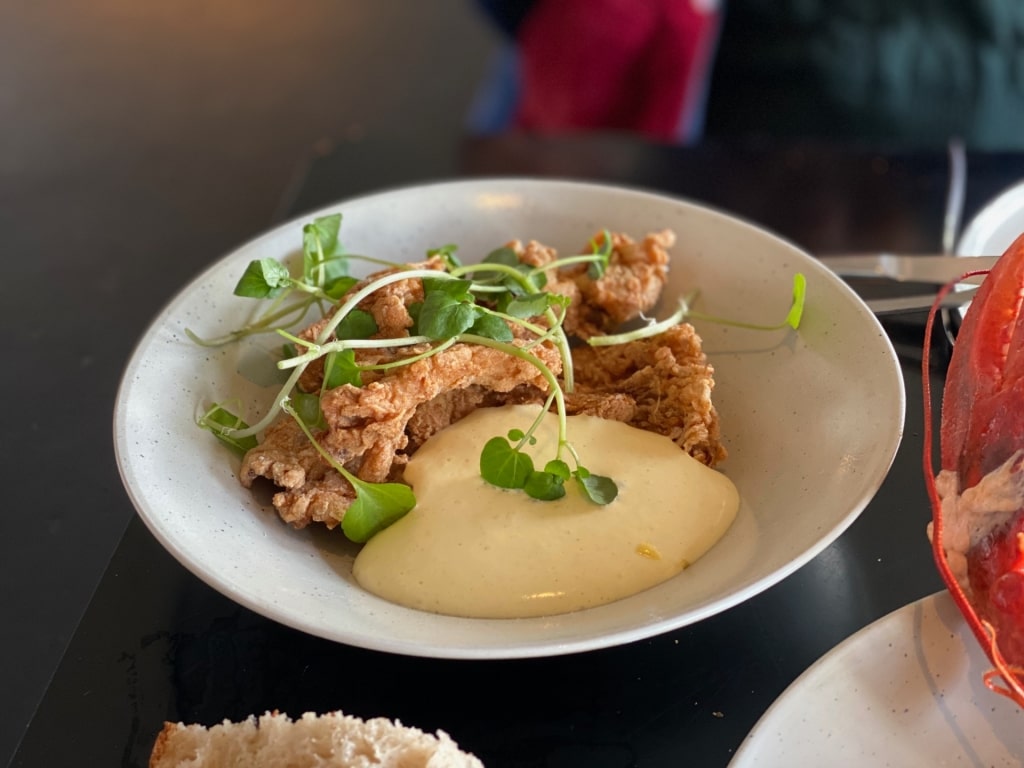
Seafood
Copenhagen’s food scene is celebrated globally. For two decades, Michelin-starred Noma has been considered one of the world’s best restaurants, helping to put New Nordic Cuisine on the map. While the acclaimed dining room has announced it will close its doors in 2024, its reinvigoration of Danish gastronomy continues city-wide.
One formerly gritty district where that regeneration is particularly noticeable is Kødbyen. Across this trendy quarter, the former Meatpacking District, old warehouses and packing factories have been overhauled as steak restaurants, coffee roasteries, and cool cocktail bars.
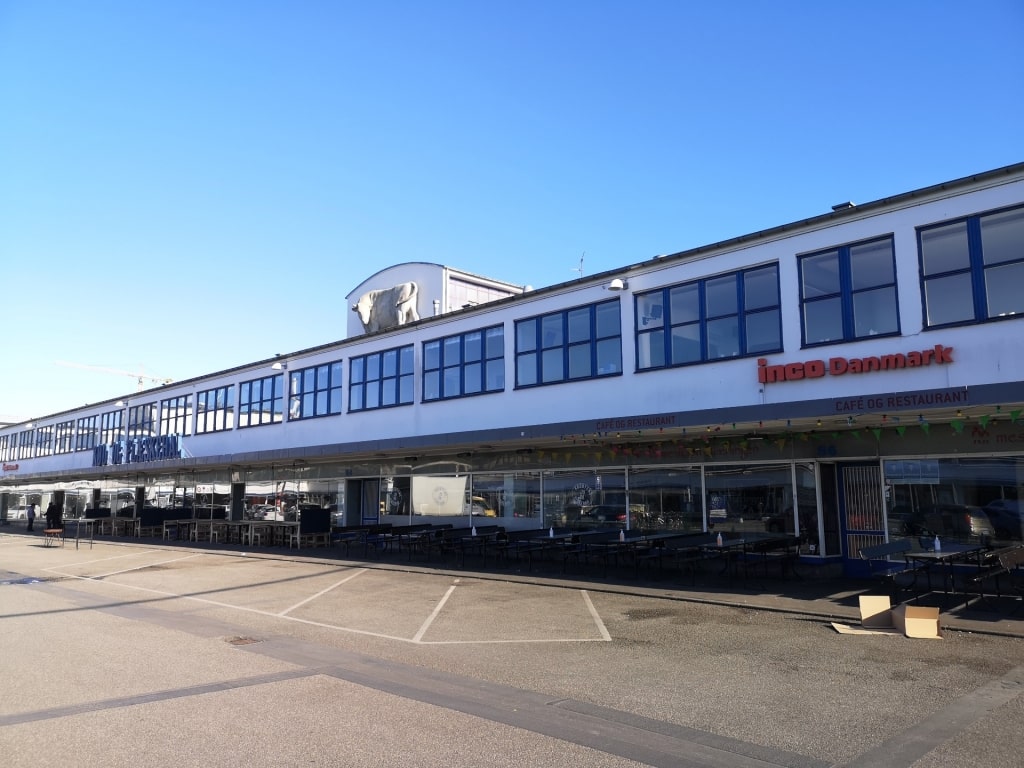
Kodbyens Fiskebar Photo by .Martin. on Flickr, licensed under CC BY-ND 2.0
One of the best things to do in Copenhagen as the sun sets is to sink into a deckchair outside Kodbyens Fiskebar, ideally with a refreshing glass of Denmark’s own Vexebo wine.
Afterward, enter the industrial-style dining room for a seafood feast. Locally sourced seafood from the Limfjord includes plump oysters and meaty blue mussels, and freshly grilled rødspætte (plaice), some of the city’s best delicacies.
Discover Copenhagen’s Kastellet
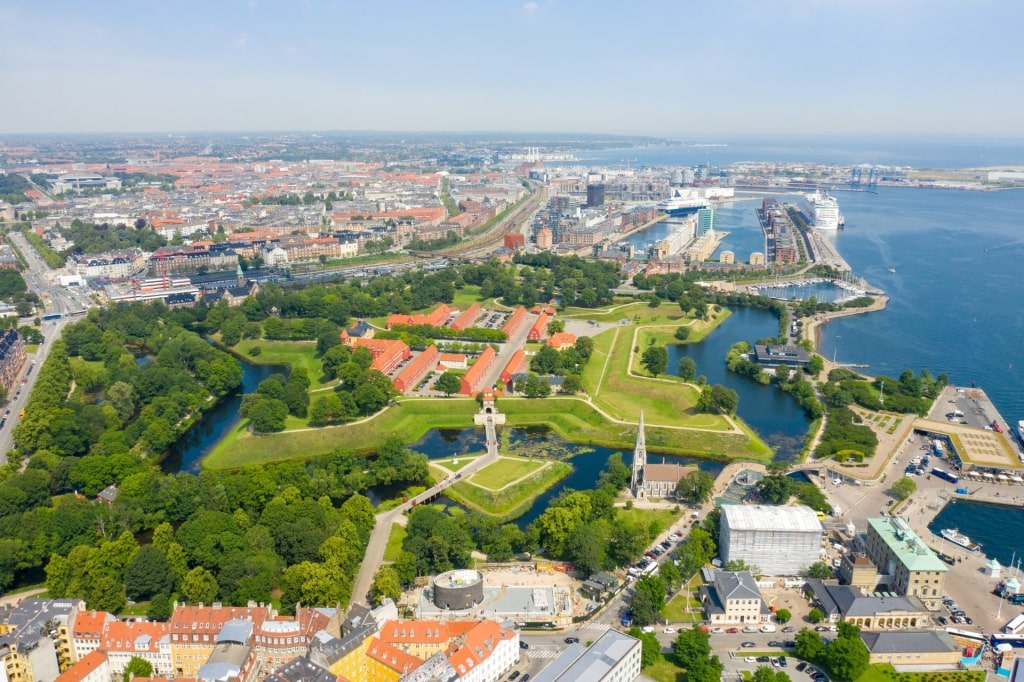
Kastellet
A citadel within a city, Copenhagen’s Kastellet was constructed in the 17th century to defend the city’s inner harbor and port. Still in use today as a military barracks, parts of the moated, star-shaped citadel are open to the public.
Kastellet is considered one of Europe’s best-preserved fortresses and it’s worth crossing the bridge and entering the imposing gates flanked by grassy ramparts for a peek inside.
On the moat’s edge, you can also visit the Museum of Danish Resistance, which focuses on life in Denmark during WWII. Nearby, the English-style, all-stone St Alban’s Church and Dutch-style Kastelsmøllen windmill are two of Kastellet’s more curious sights.
Experience Tivoli Gardens
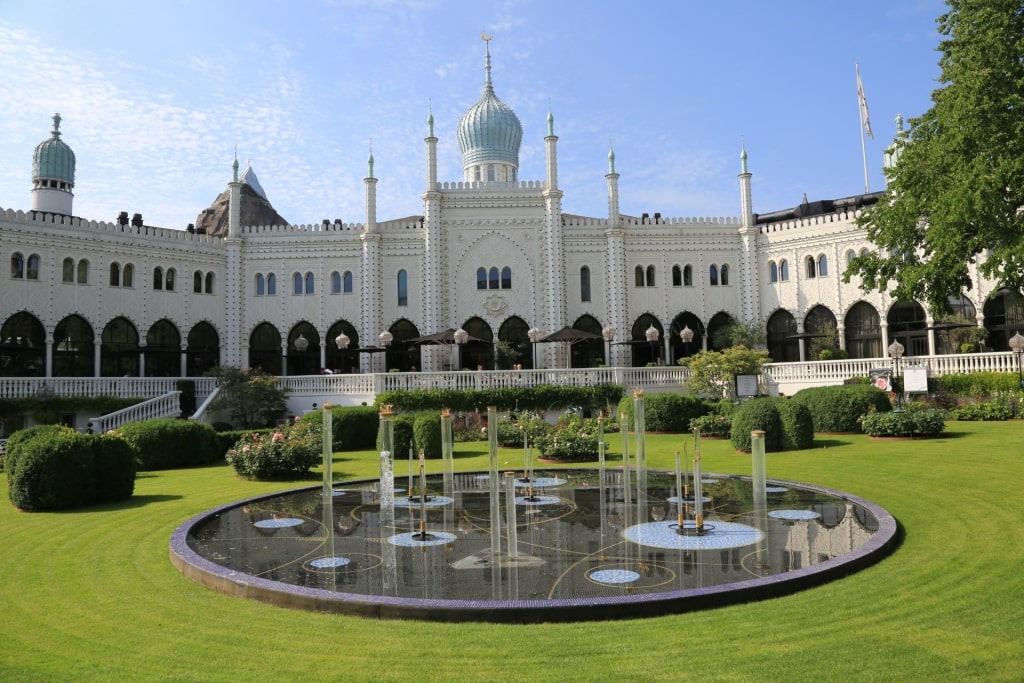
Tivoli Gardens
Enjoying the rides, attractions, pavilions and restaurants of the Tivoli Gardens has been one of the most famous things to do in Copenhagen since its doors opened to much fanfare in 1843.
Still retaining much of the same playful design to this day, the vintage-style amusement park is a true Copenhagen landmark. Far from being solely about adrenaline and rollercoasters, Tivoli is equally tranquil.
The park’s founder, Georg Carstensen, inspired by his travels abroad, was keen to incorporate lavish gardens and exotic flowers within Tivoli’s grounds. You’ll even spot free-roaming peacocks around the flower beds.
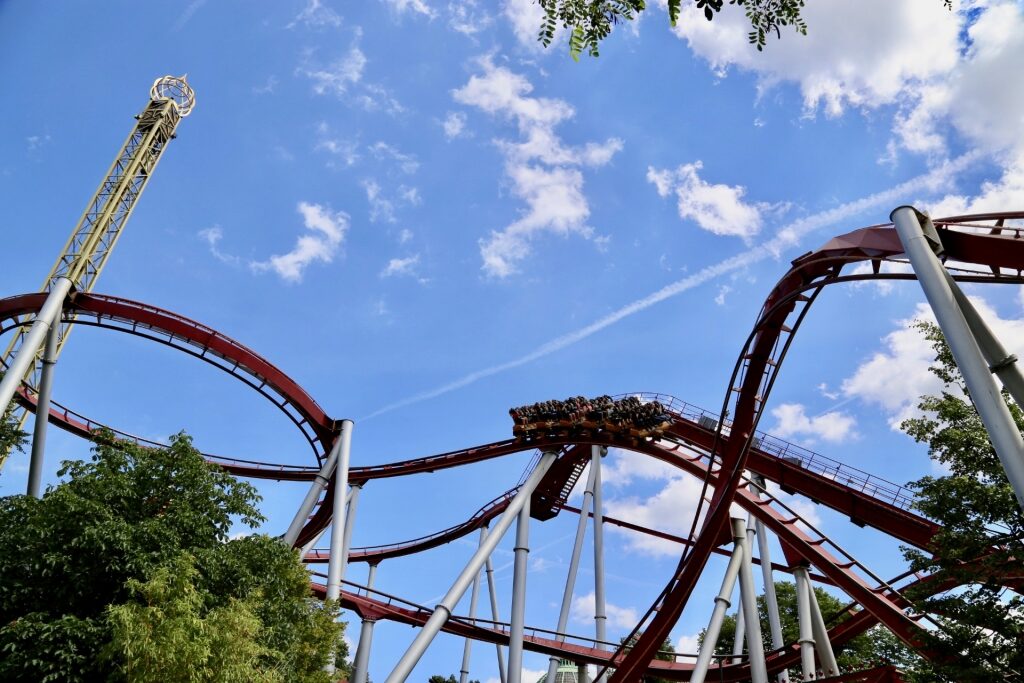
Tivoli Gardens
You could easily spend an afternoon, or even your full day in Copenhagen, appreciating the gardens and enjoying the amusements. Riding Vertigo, a well-maintained wooden roller coaster that opened in 1914, is one of Tivoli’s greatest joys.
Tivoli is often incorrectly assumed to be the world’s oldest amusement park, but that accolade actually goes to Bakken, another park on Copenhagen’s outskirts.
Visit the Louisiana Museum of Modern Art
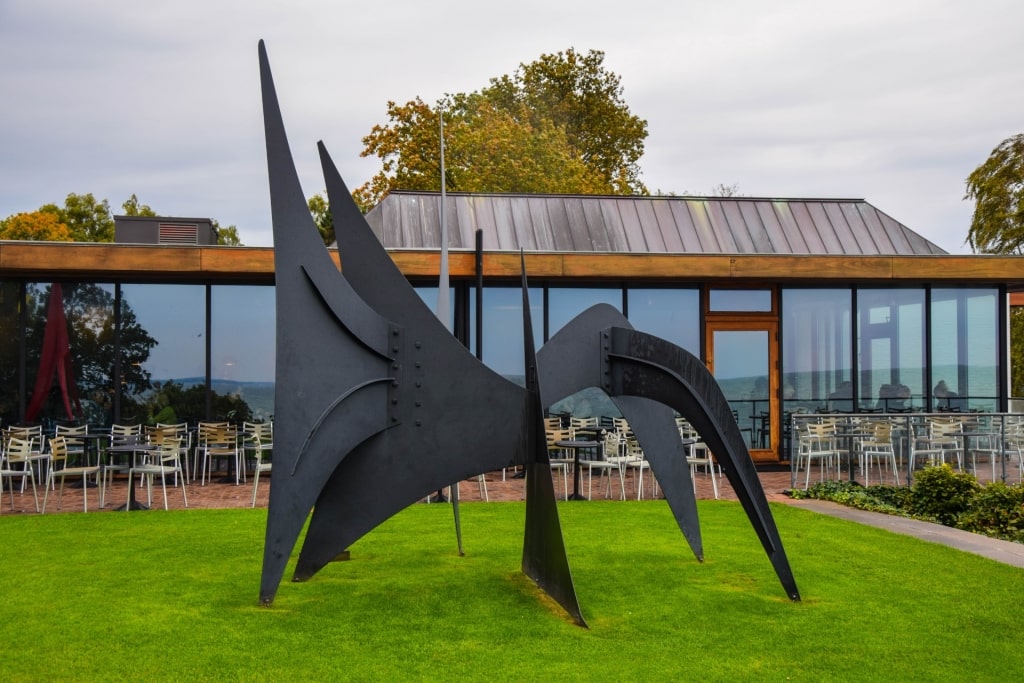
Louisiana Museum of Modern Art Photo by Maria Eklind on Flickr, licensed under CC BY-SA 2.0
Regarded as one of the leading modern art galleries in the world, the Louisiana Museum of Modern Art is a 45-minute train ride north of Copenhagen. Set in the small town of Humlebæk, the contemporary, clean-lined, glass-heavy building overlooks the Øresund strait.
The museum’s architecture is as alluring as the art. Expanded numerous times since its inauguration in 1958, the collection of some 4,000 works can be appreciated on a circular route, descending into subsurface galleries before returning to full-length windows framing the leafy sculpture gardens.
Alongside the rotating permanent collection, thought-provoking, contemporary, and sometimes controversial exhibits often adorn the temporary exhibition spaces. Post-visit, enjoy a coffee on the terrace of the café, overlooking the serene scenery of the Nivå Bugt Bay and Sweden beyond.
Climb the Church of Our Savior’s Tower
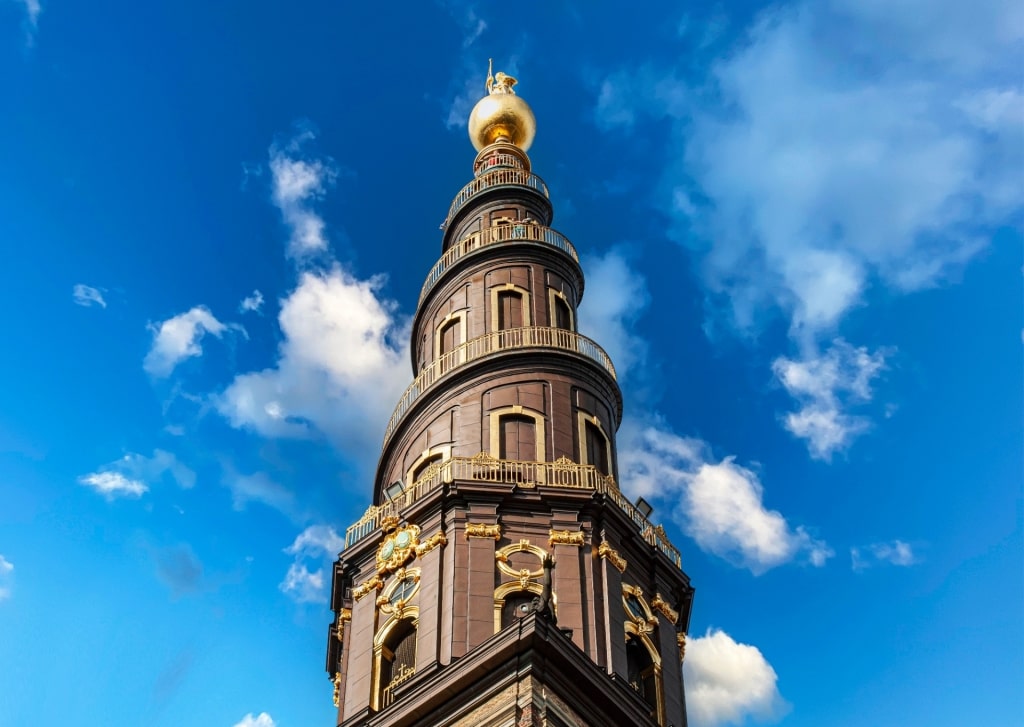
Church of Our Savior’s Tower
Since 1752, the twisted serpentine spire of Vor Frelsers Kirke has soared on Copenhagen’s skyline.
After glimpsing the historic organ and subdued decor of the Baroque church, brace yourself for one of the most nerve-racking things to do in Copenhagen. Climbing the 400 narrow steps to reach the top of the tower.
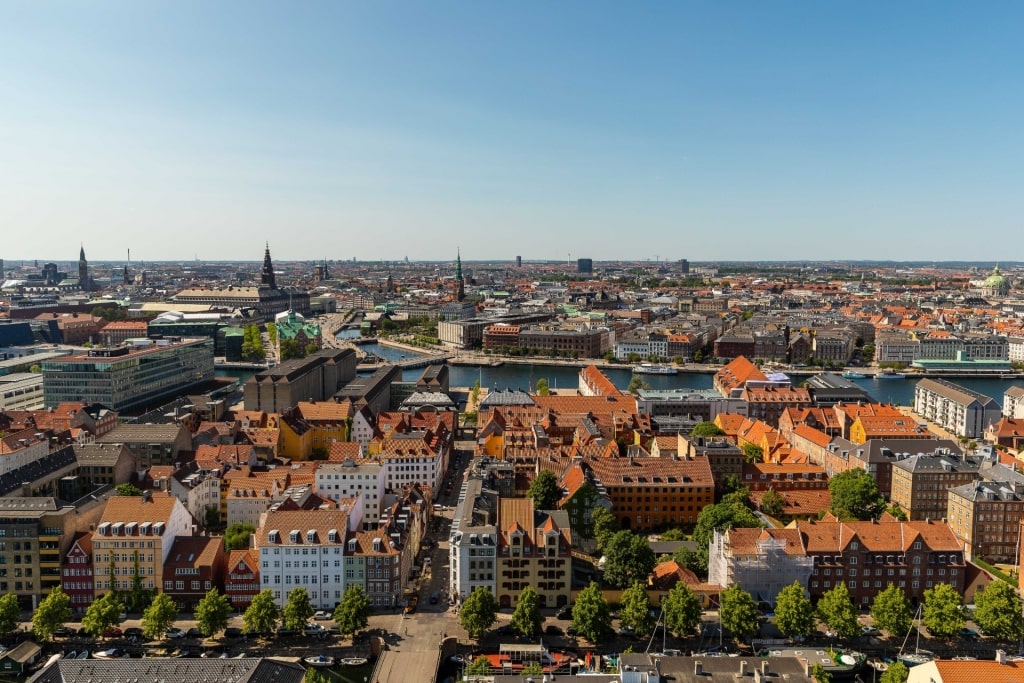
View from the Church of Our Savior’s Tower
During the final 150 steps, you’ll be treated to 360-degree views across Copenhagen as you circle the spire’s exterior. Once you reach the 282-foot-high observation deck, just below the gilded globe crowned with the savior’s statue, far-reaching panoramas provide both respite and a reward for the climb.
From here, the city’s canals, landmarks and the Øresund Bridge, which links Denmark with Sweden, unfurl. With 48 bells forming the tower’s carillon, a well-timed visit might even be accompanied by a musical serenade.
Get Dizzy in the Round Tower
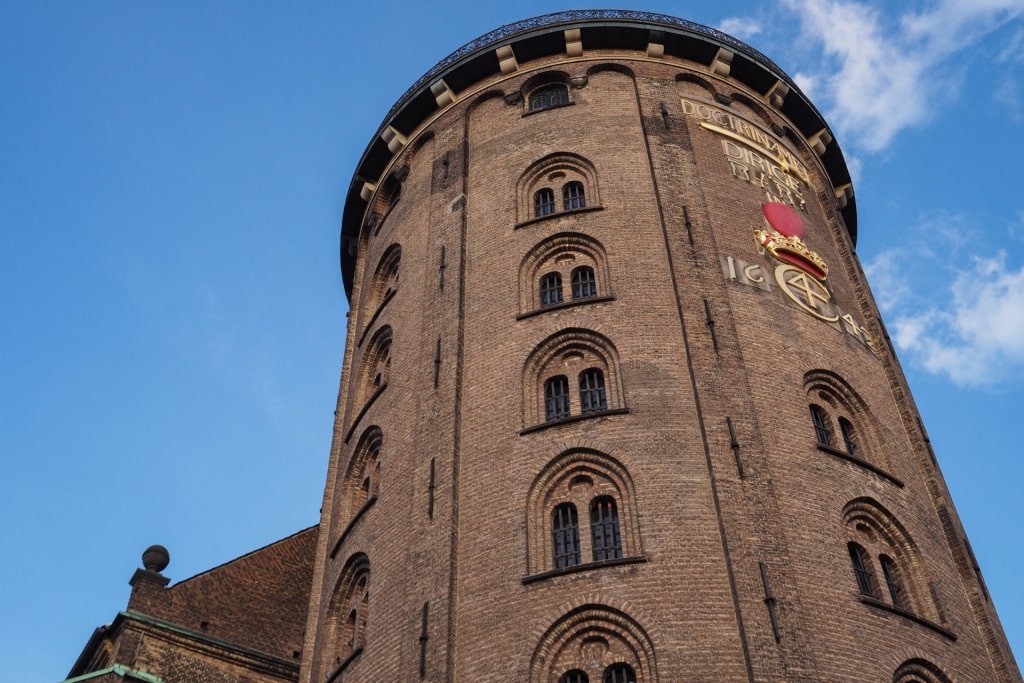
Rundetaarn Tower
For a less vertigo-inducing appreciation of Copenhagen’s skyline, climb the 17th-century Rundetaarn tower instead.
Constructed with a more gentle incline, the internal sloping staircase, designed to be horse-friendly, wraps around a hollow core, leading to the far-reaching views of the astronomical observatory atop.
Kayak or Cruise the Canals
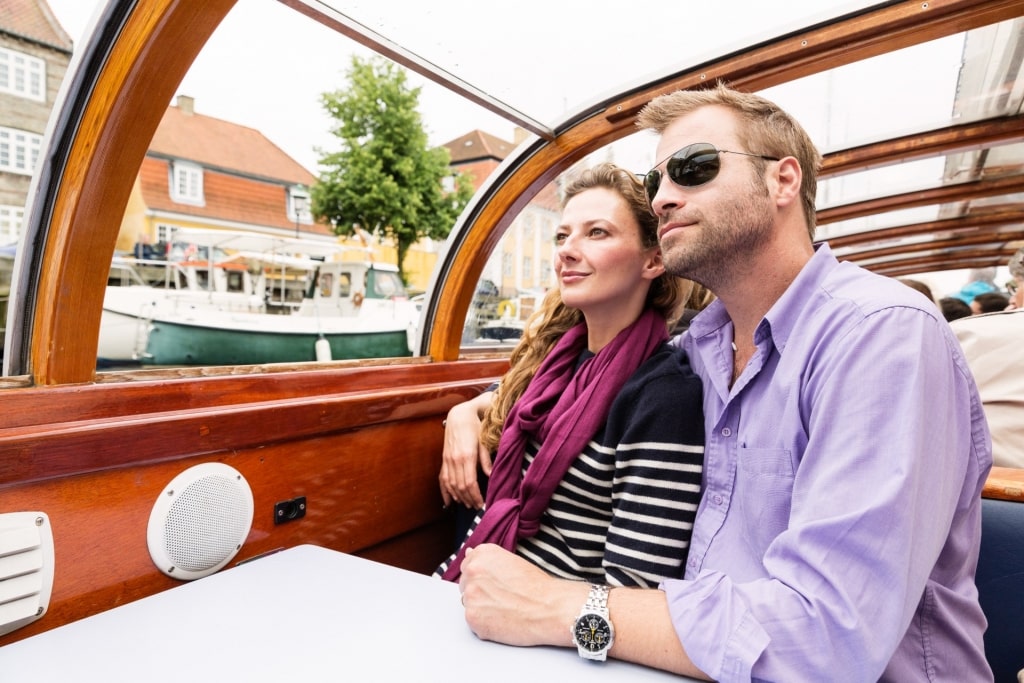
Canal cruise in Copenhagen
Copenhagen’s canals can be explored in numerous ways, from architectural tours on foot to hopping on the public Havnebusser, which zig-zags along the central harbor canal.
Canal cruises are another popular way to see the city’s highlights. Varying itineraries string together different districts, depending on the size of the vessel.
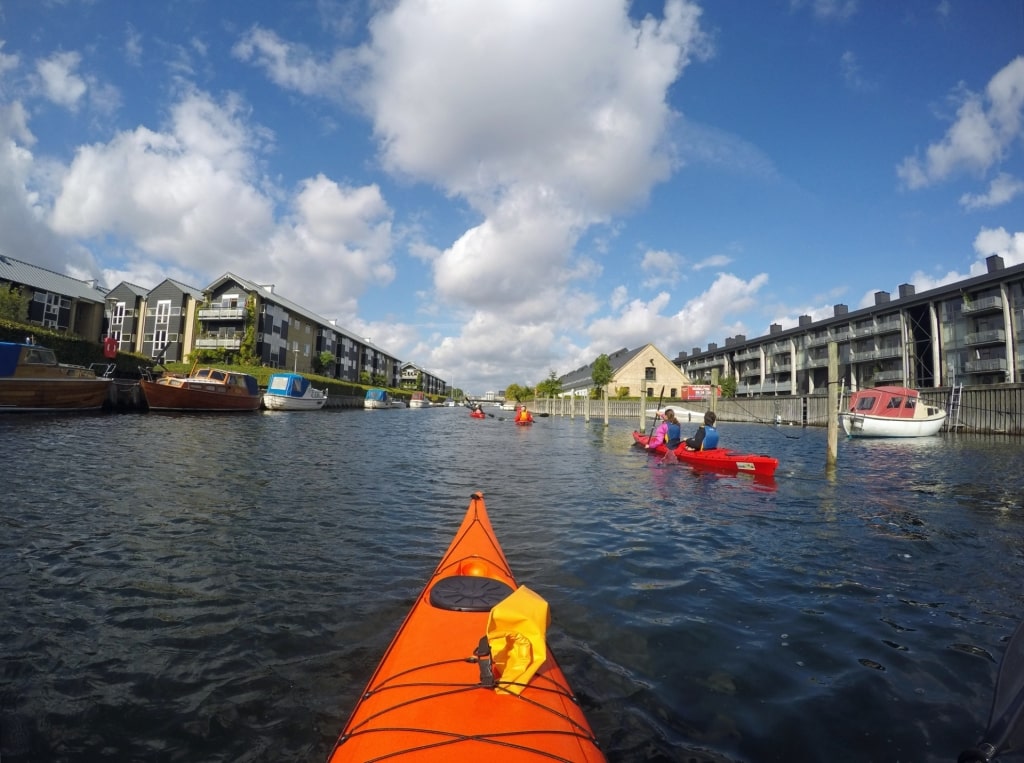
Kayaking in Copenhagen
Yet, for a slower and more up-close experience, consider gliding along the canals by kayak, one of the most memorable things to do in Copenhagen on a pleasant day.
Accompanied by an expert guide, paddling along in a single-person kayak will afford the opportunity to admire the city’s water-flanking sights from another perspective. See the Little Mermaid free of crowds. Admire the striking Opera House with a front-row seat. Then slip down the less-trafficked Christianshavn Canal for a serene finale alongside Christiania.
Experience Christiana
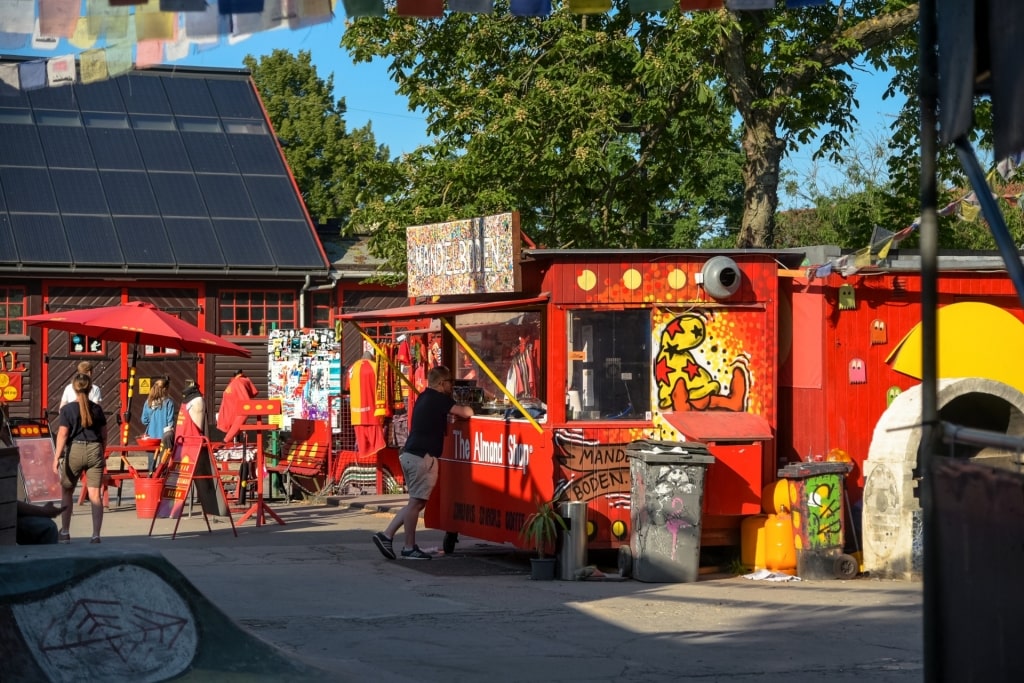
Christiana Photo by Jorge Franganillo on Flickr, licensed under CC BY 2.0
Visiting Freetown Christiania is one of the most unusual things to do in Copenhagen. Established in the early 1970s by free-spirited squatters who occupied a former military base, the breakaway society of Christiania became slightly more “official” in 2012, following an agreement with the council to purchase the land.
Still, this now extended district remains an outlier and an unexpected liberal find for a European capital. With their own flag, currency (the Løn), a ban on cars and a commune-managed tax system, the 900-odd residents of Freetown Christiania are very much self-regulated.
While anyone can enter and walk around Christiania, there is a short but strict set of rules that must be followed. A ban on photography is strictly enforced. Taking care of your belongings and steering clear of those selling contraband will allow for a trouble-free visit.
Once inside the bohemian commune, you’ll find a very different Copenhagen. One where you’ll be welcomed by laid-back residents, creative murals, handcrafted and usually up-cycled wares and vegetarian restaurants. Taking a guided tour with a Freetown resident can be particularly insightful.
Watch a Concert or Performance
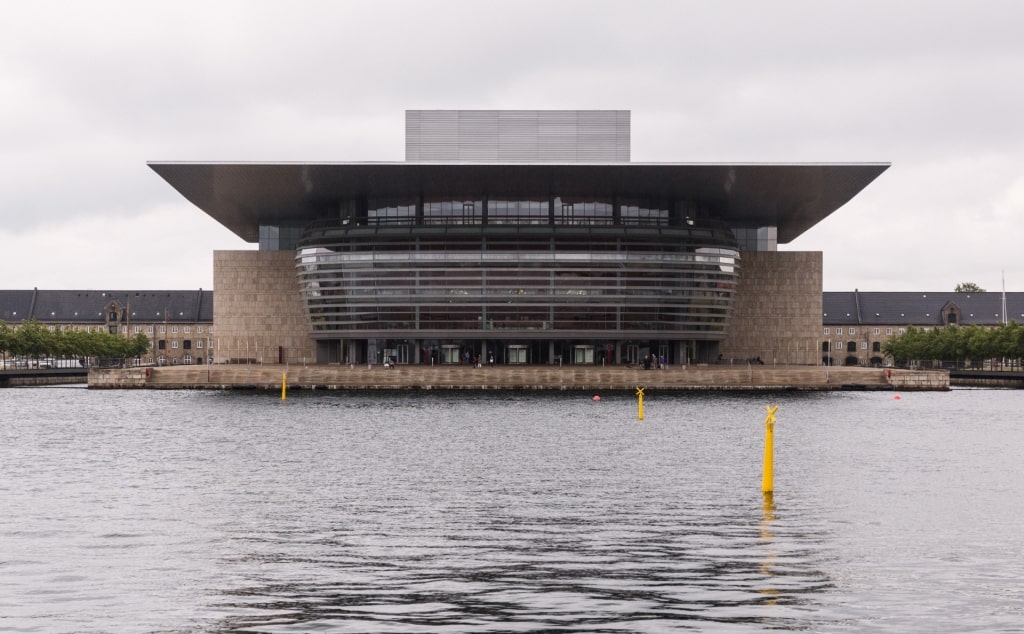
Opera House
By day, Copenhagen’s cultural scene spills across the city in museums and contemporary design, and after dark, the show continues. With a variety of first-class performance venues hosting various forms of theater—many of which are suitable for English-speaking audiences—Copenhagen is one of Europe’s best cities in which to enjoy a cultured evening out.
At the futuristic, glass and limestone-clad Opera House (officially, The Royal Danish Opera House), you can take in first-class ballet, operas, and orchestra performances. The main auditorium, with its gold-leafed ceiling, is an awe-inspiring venue.
For a more classical setting, book tickets to enjoy a ballet in the Royal Playhouse, an opulent 18th-century venue overlooking The King’s New Square. Or visit Østre Gasværk Theatre, perhaps Copenhagen’s most unique venue, to catch musicals and theater performed inside a former gasometer house.
Stroll Around the SMK
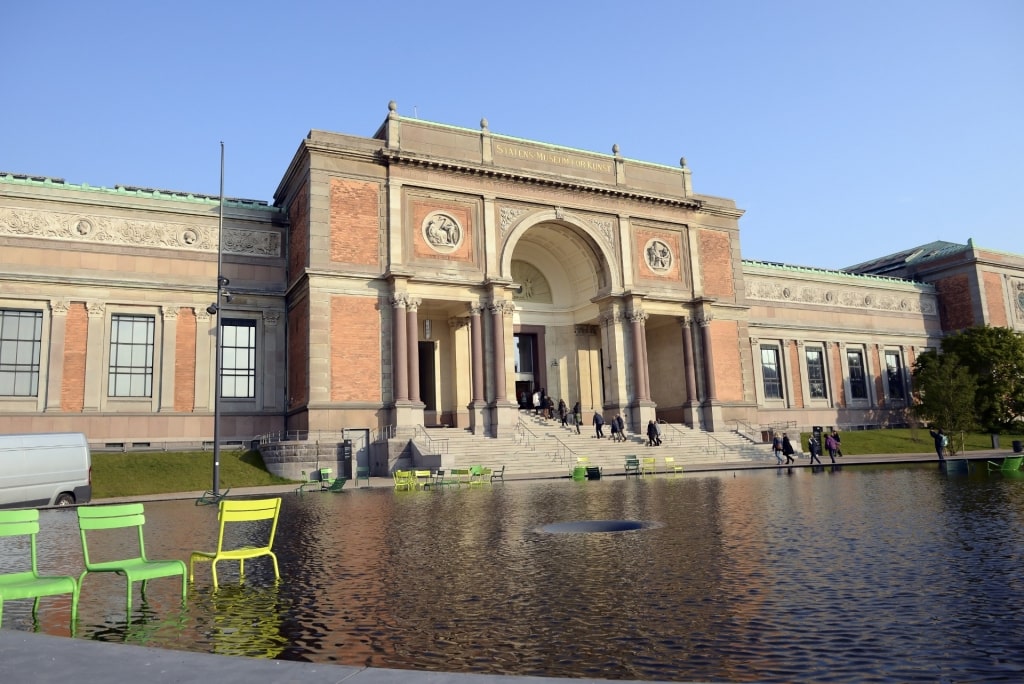
Statens Museum for Kunst
The Statens Museum for Kunst (SMK) boasts the most extensive art collection in the country. Since 1896, this hulking, Renaissance-style space has housed the National Gallery of Denmark, collating, storing, and displaying an ever-growing collection of 250,000 pieces.
While only a fraction of artworks are on display, spending a few hours exploring SMK’s expansive collection of Danish and international masterpieces is one of the best things to do in Copenhagen.
For an insight into Denmark’s breakthrough artistic period, the permanent collection of mid-18th century Danish and Nordic masters shouldn’t be missed. A clutch of 20th-century paintings by the likes of Picasso and Matisse are equally enthralling. As part of the Parkmuseerne District, a district pass gives access to half a dozen museums, including the SMK and Rosenborg Castle.
Tour Rosenborg Castle
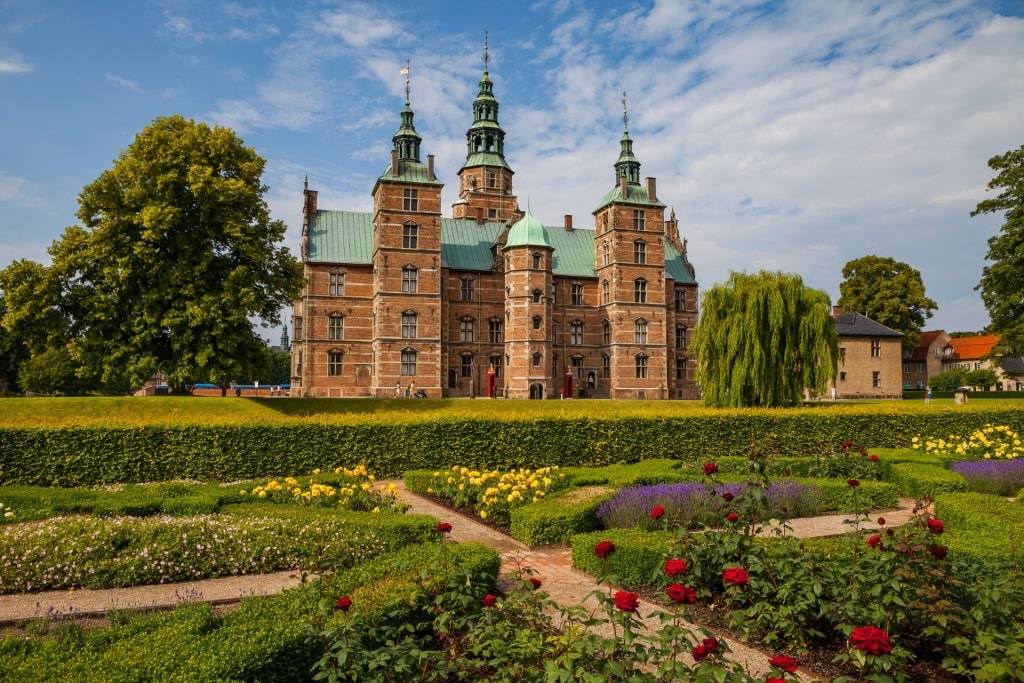
Rosenborg Castle
Flanked by the oldest royal gardens in the country, the Renaissance-era Rosenborg Castle is pretty inside and out. King Christian IV constructed the palace as a summer retreat, and it later became an official royal residence three times. Two of these brief stints were during emergencies, following Christiansborg’s fire and the First Battle of Copenhagen.
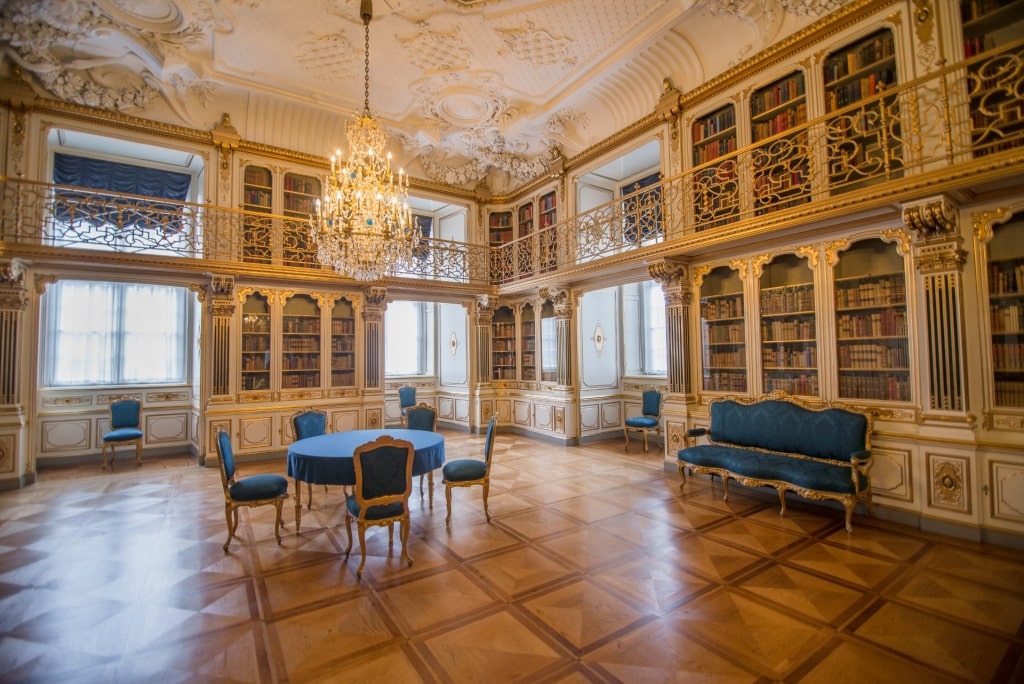
Rosenborg Castle
Walking through the well-preserved early 17th-century castle, you’ll cross numerous elegant rooms. The Knight’s Hall, with its dozen war-depicting tapestries and coronation throne, and the elaborate wood-paneled Winter Room, are a pair of standouts.
More than just a stately tour, Rosenborg is a time capsule-like museum. The Treasury Collection, packed with regalia, diamond-decorated State Swords, and the sapphire-jeweled crown of Christian V, is fabulous. Likewise, the extensive Venetian glass exhibit and the collection of Denmark’s own Flora Danica porcelain shouldn’t be missed.
Shop Scandi or Study Danish Design
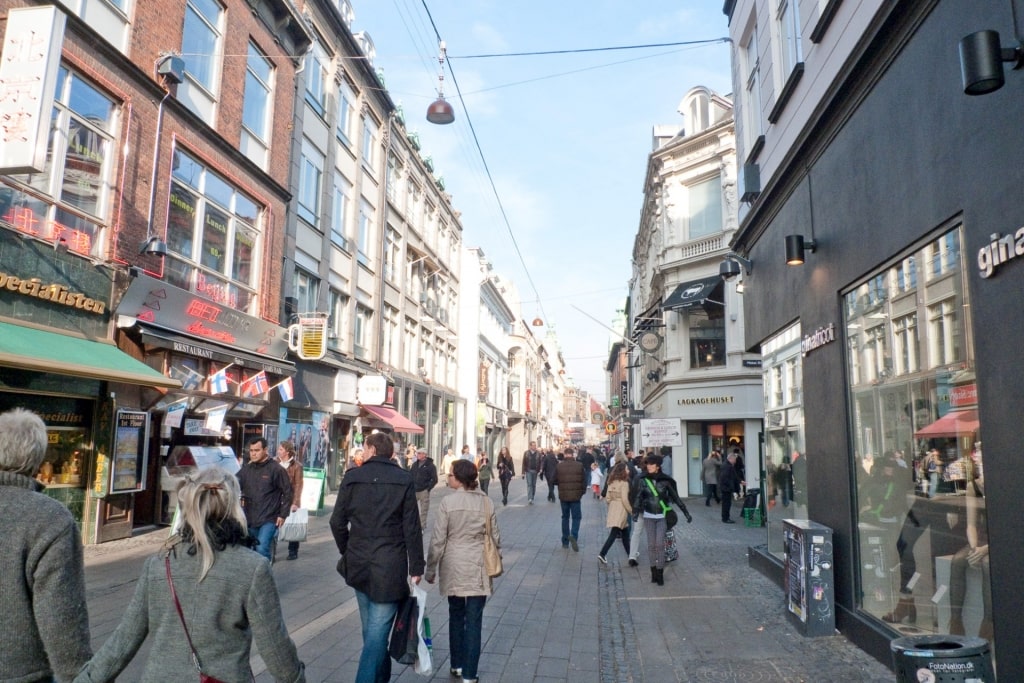
Strøget Photo by Jim Bahn on Flickr, licensed under CC BY 2.0
Nordic design is globally revered, and much of this can be credited to Copenhagen. As one of the best shopping cities in Europe, designer boutiques and independent Scandi chic fashion stores are plentiful across the city. The streets surrounding Strøget, the main pedestrian shopping area, are an excellent place to enjoy a little retail therapy.
However, to understand more about the rise in Denmark’s creative credentials, pay a visit to one of Copenhagen’s dedicated museums.
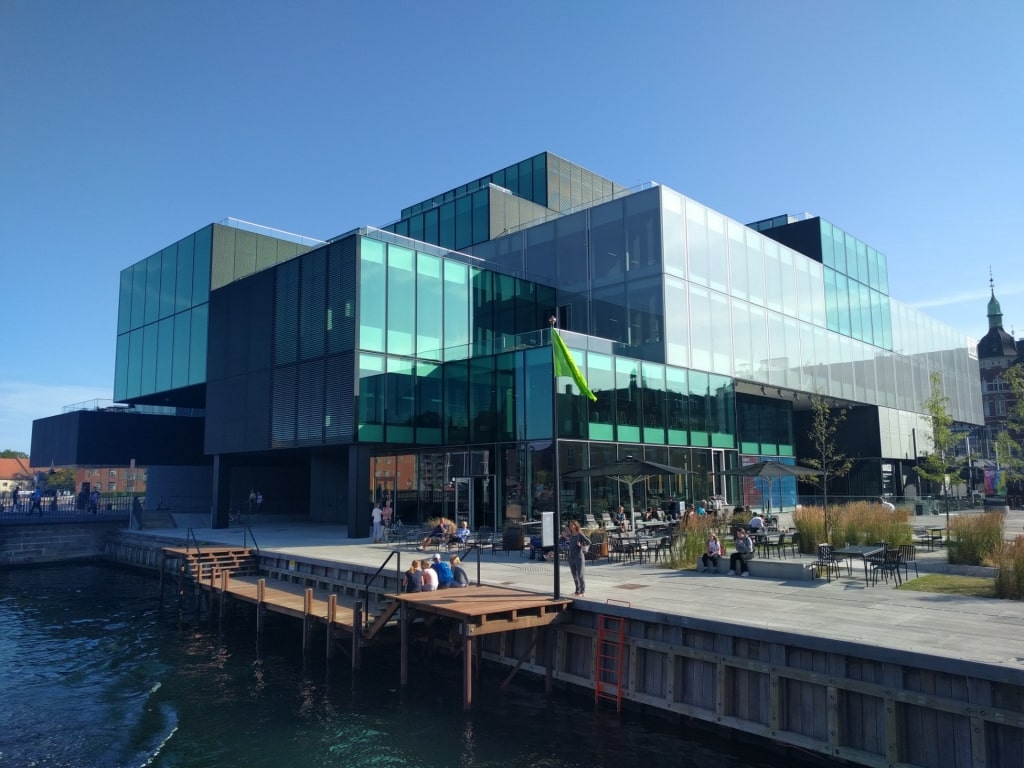
Danish Architecture Centre Photo by Sintakso on Wikimedia Commons, licensed under CC BY 4.0
At the Danish Architecture Centre, a glass-fronted work of art in itself, you’ll find a small space dedicated to temporary architecture exhibitions. If you’re more interested in fashion or furniture, head to the Denmark Design Museum, located in an unassuming former hospital.
Scandinavian design takes the spotlight here. Clean-lined Nordic furniture and colorful textiles are exhibited alongside a smaller collection of European and East Asian pieces.
Explore Christiansborg Palace
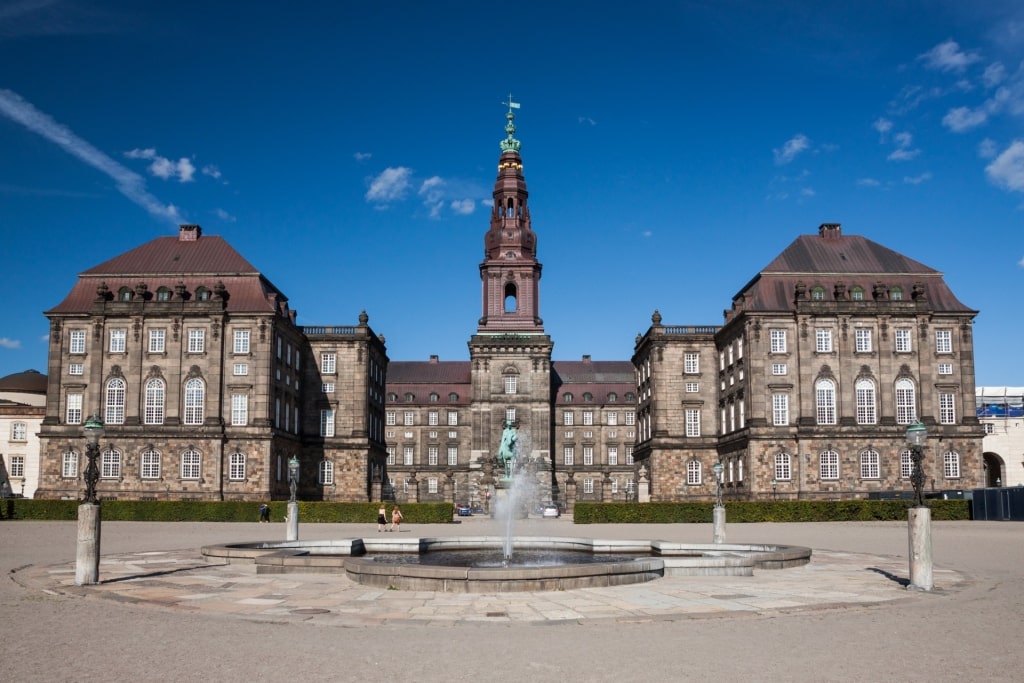
Christiansborg Palace
Since the mid-12th century, a palace or castle has been Slotsholmen Island’s centerpiece. There have been five former castles in this location, including three Christiansborg Palaces—two of which were destroyed by fire. The current neo-Baroque iteration was completed in 1928.
One constant throughout this dramatic history is the location’s role as Denmark’s center of power. In fact, Christiansborg is no longer a royal residence, instead housing the Danish Parliament, the Prime Minister’s office, and the Supreme Court.
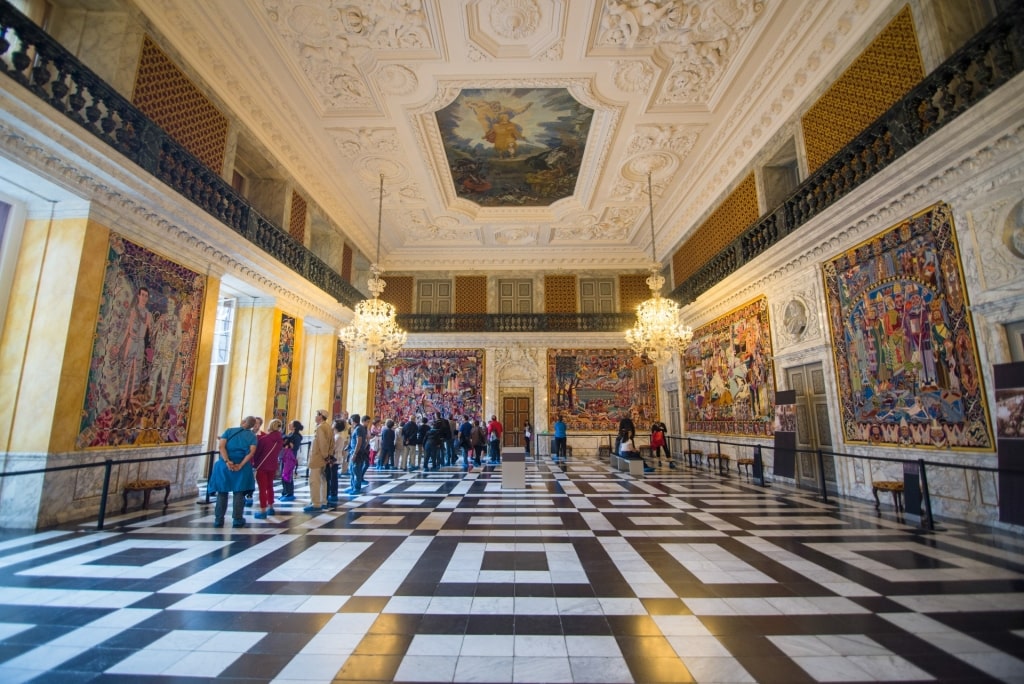
Christiansborg Palace
Even with the somewhat serious-sounding purpose, visiting Christiansborg is still one of the most interesting things to do in Copenhagen. And you can still witness some of the former royal halls in all their glory. The all-marble Throne Room, used even today to host banquets and state visits, and the tapestry-decorated Great Hall remain fit for a king.
To unearth the castle’s 800 years of history, take a tour underground, where ruins of the original medieval castle are visible.
Visit the Royal Danish Library & Gardens
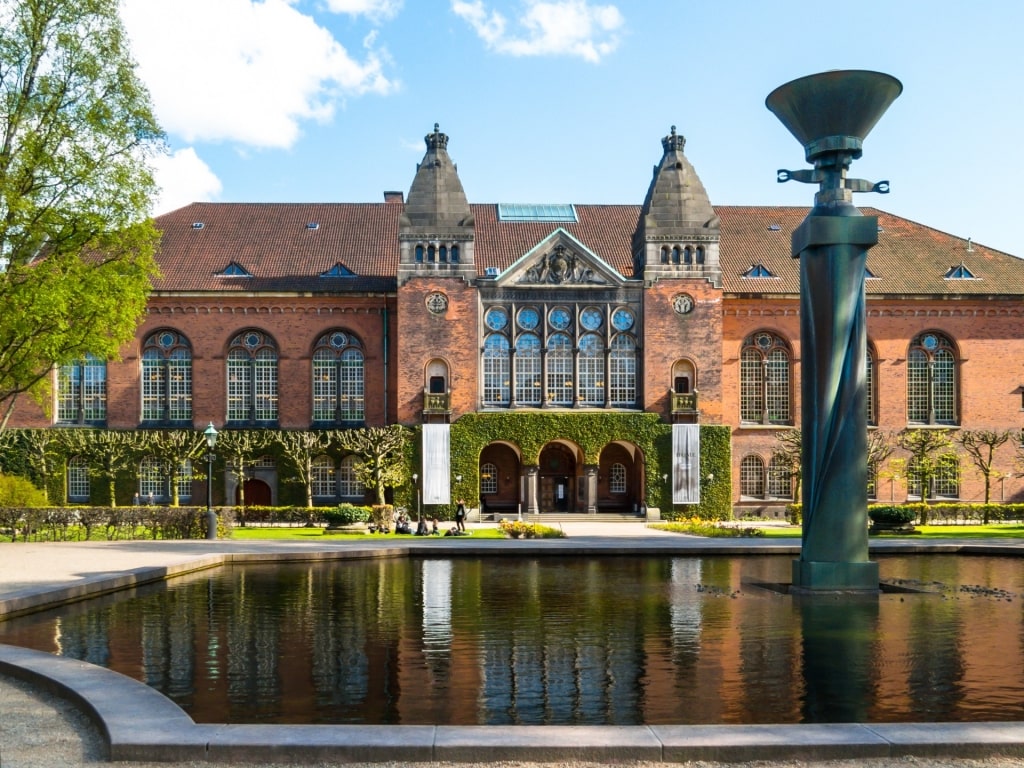
Royal Library
Fronting Slotsholmen Island is the “Black Diamond”, a contemporary glass landmark and the modern extension of the Royal Library. While much of the space is dedicated to study and research, visitors can still enter inside.
Pause at the café to appreciate the turn-of-the-century architecture, or visit the National Museum of Photography in the basement.
Behind the original building, the Royal Library Gardens offer a more classical respite. Landscaped in the 1920s to coincide with the reconstruction of Christiansborg Palace, the green city-center retreat of colorful flower beds was constructed over a former naval port. Maritime-inspired sculptures dot the gardens, giving a nod to the area’s former role.
Sample Smørrebrød

Smørrebrød
To best enjoy an array of Scandinavian flavors, seek out smørrebrød, one of Denmark’s most typical dishes. These signature open-faced sandwiches are stacked with ingredients, all atop a slice of rugbrød (a dense Danish rye bread).
On top of the traditional base, generously spread with butter or goose fat, almost anything goes, although there are a few combinations that are ubiquitous. Thin slices of roasted beef topped with horseradish, as well as pickled herring, liver paste, and succulent pink shrimp are some of the most common toppings.
However, some smørrebrødsjomfru—the official designation for qualified smørrebrød makers, translating to sandwich maid—prefer a contemporary twist, adding caviar, edible flowers, and other premium ingredients to their palatable works of art.

Smørrebrød
For some of the most indulgent smørrebrød in the city, make a reservation at Restaurant Schønnemann, considered the go-to for over a century. Alternatively, use lunch as an excuse to visit atmospheric Torvehallerne. Inside this fresh produce market, you’ll find a few stalls dedicated to smørrebrød.
Read: Best Food Cities in Europe
Step Back in Time at the National Museum of Denmark
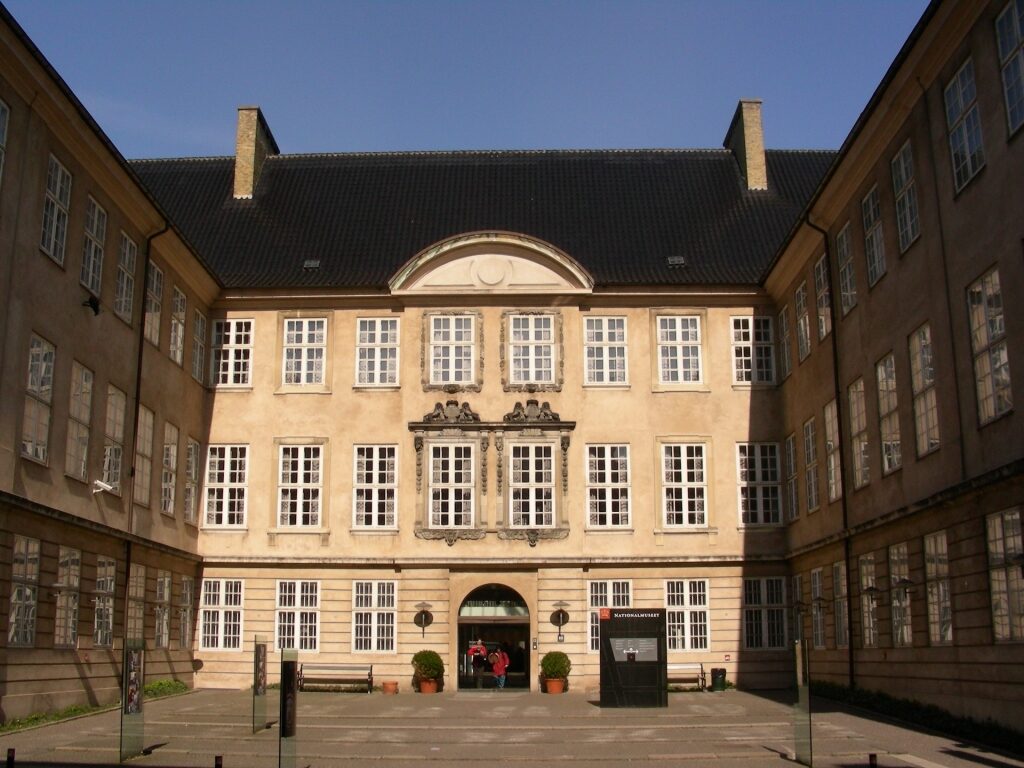
National Museum of Denmark
Denmark’s largest museum, the Nationalmuseet, is a true time capsule. With a collection spanning prehistory to more recent times, a visit is one of the best things to do in Copenhagen to delve into Denmark’s history.
Standouts in the culturally significant permanent collection include sacred art from the Middle Ages, magnificent Renaissance paintings, and the “Stories of Denmark” exhibition. The latter follows a chronological route through rooms recreating four centuries of Danish history.
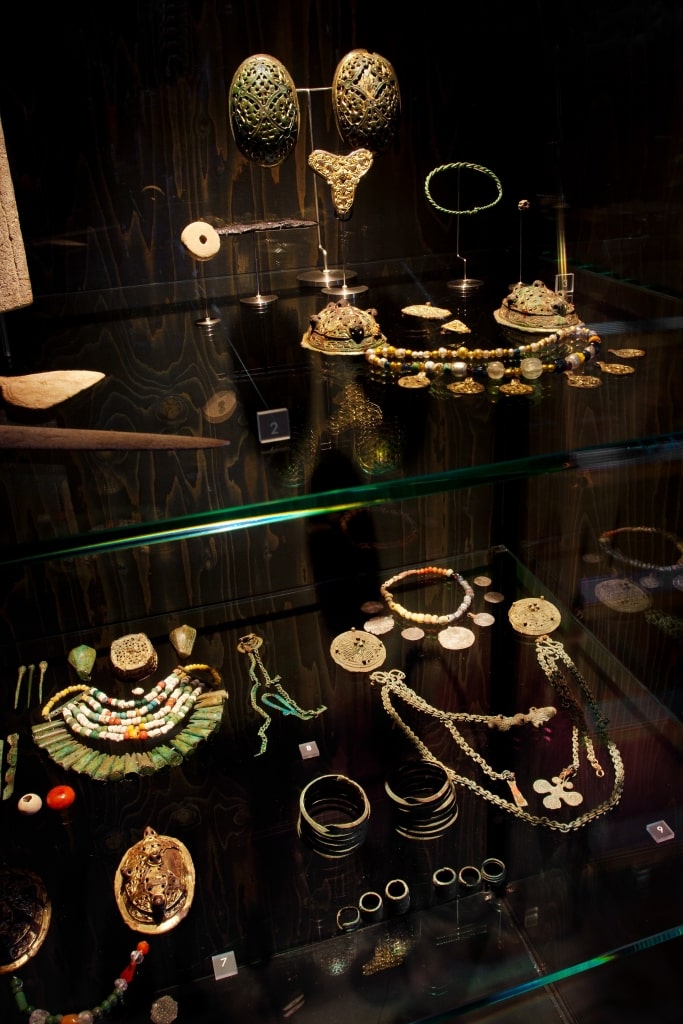
National Museum of Denmark Photo by Nationalmuseet – The National Museum of Denmark on Wikimedia Commons, licensed under CC BY-SA 2.0
However, it’s the Viking Age collection, dedicated to Denmark’s most myth-clouded era, that’s most interesting. Here, you’ll discover the real stories of these seafarers through engraved runestones, weathered jewelry, and bullion coins.
As you tour the museum, set in the former Prince’s Palace, keep your eyes peeled for remnants of the past. Original mid-18th-century features, such as stucco ceilings and parquet flooring, are well preserved.
See Thorvaldsen’s Sculptures
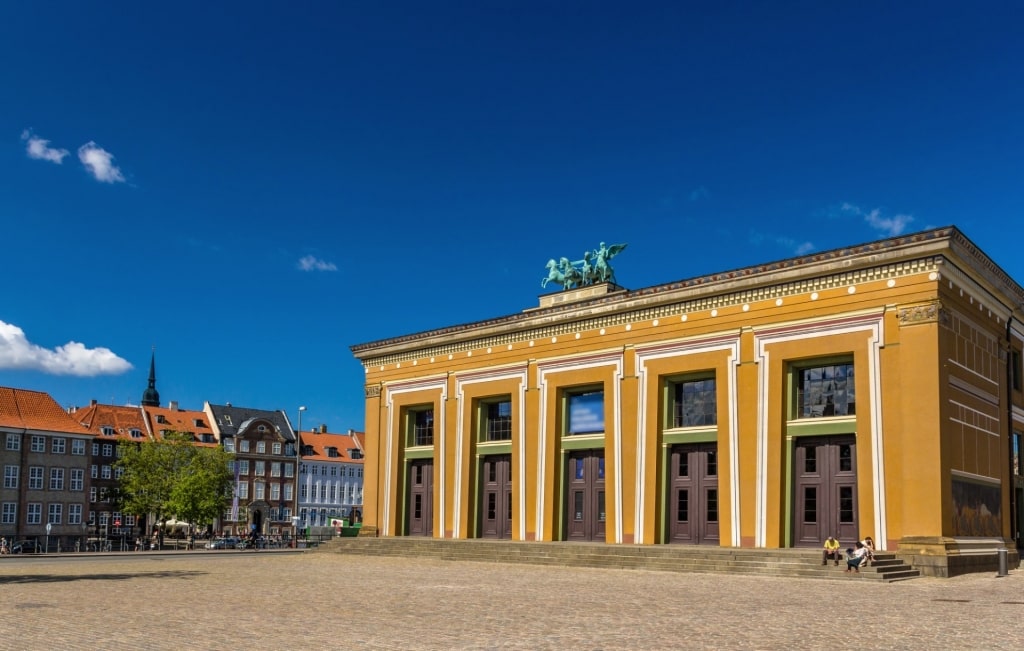
Thorvaldsen Museum
The Little Mermaid might be the nation’s most famous sculpture, but Bertel Thorvaldsen is Denmark’s most celebrated sculptor. Born in 1770, Thorvaldsen crafted a considerable catalog of work during his lifetime. Perhaps this is why he has one of the only single-artist museums in the Scandinavian city.
As such, a visit to the Thorvaldsen Museum is one of the best things to do in Copenhagen to see solely Danish work exhibited. Particularly impressive are his neoclassical sculptures, many of which were crafted from marble while working in Italy.
Renowned for his skill in chiseling highly detailed, representative sculptures, Thorvaldsen’s work ranges from commissioned royal busts to recreations of Greek myths and legends. His body is buried in the inner courtyard, surrounded by some of his greatest works.
Sip Cocktails or Craft Beer
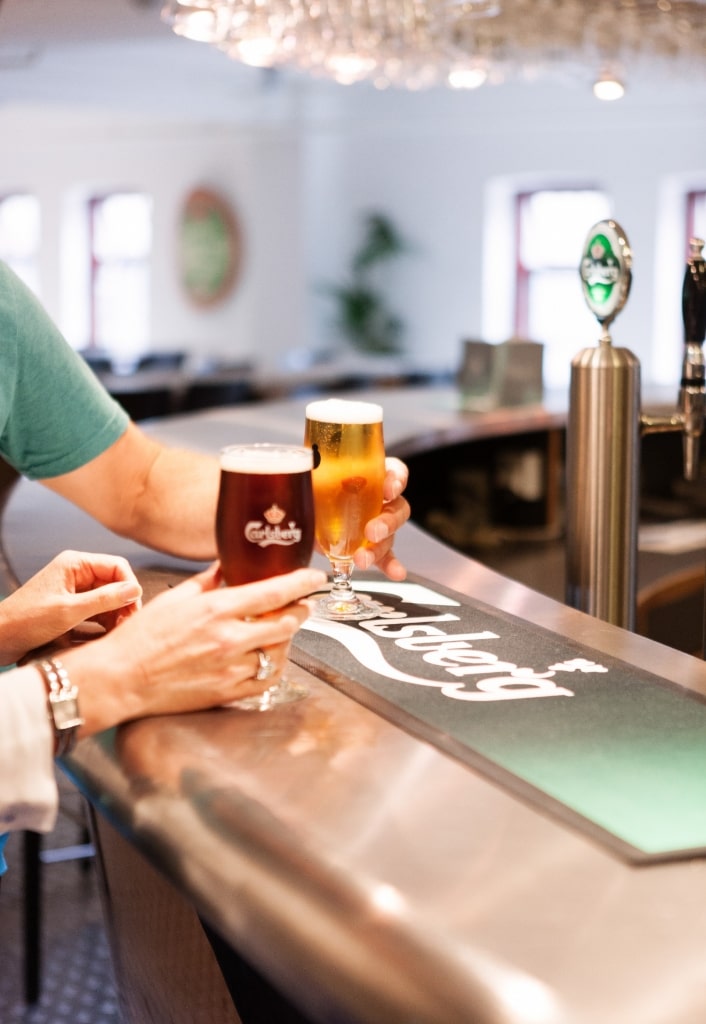
Craft beer
From chic cocktail bars to on-trend microbreweries, Copenhagen’s bar scene has blossomed in recent years, playing catch-up with the city’s culinary credentials. Finding a cozy bar to enjoy some hygge-like vibes or an industrial-style craft brewery for a tasting flight is effortless.
Speakeasies are especially high-quality in Copenhagen. Ruby, an easy-to-miss cocktail bar housed in an old townhouse across from the Thorvaldsens Museum, is a longtime favorite. Or head to Curfew, where Portuguese mixologist Humberto Marques will mix you one of Copenhagen’s best cocktails.
If craft brews are more your thing, venture to Warpigs in the Meatpacking District, where more than 20 in-house brewed beers are available on tap. Central Taphouse raises the game further with its 61 draughts from all corners of the globe.
However, if you’re content with a lager, there’s one brewery that reigns supreme in Copenhagen: Carlsberg.
Drink in the Original Carlsberg Brewery
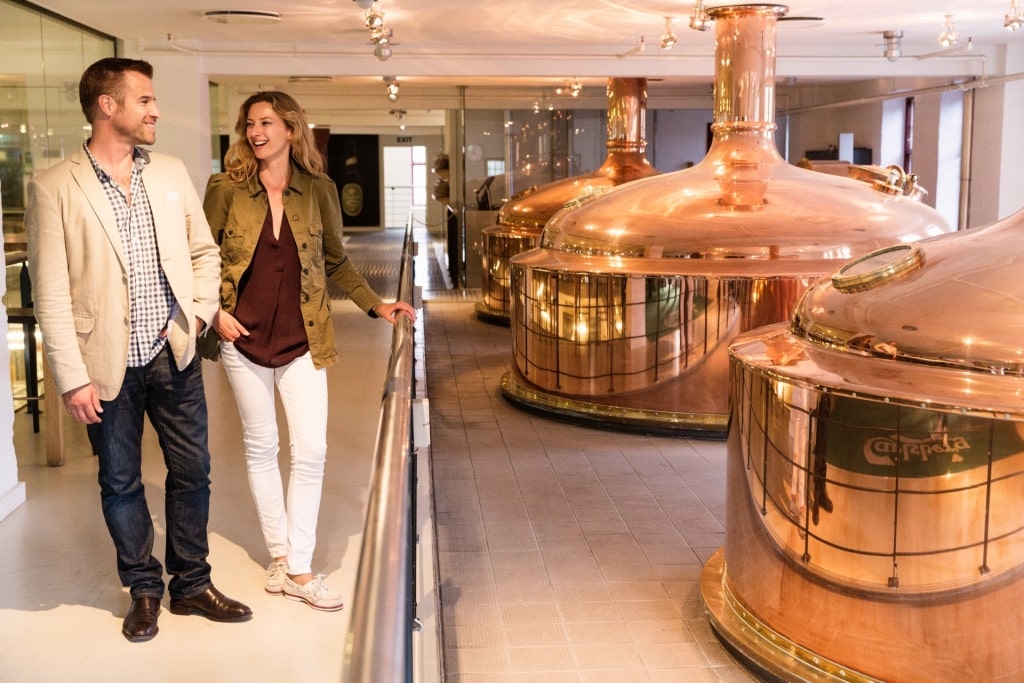
Carlsberg Brewery
Founded in 1847 by Jacob Christian Jacobsen, family-run Carlsberg has since grown into a global household brand. Despite its proliferation, the original brewery site remains in Copenhagen, offering tours and tastings as the “Home of Carlsberg.”
Following a five-year redesign, the brewery reopened at the tail end of 2023. There’s now an interactive museum that shares the history of the father-son brewery alongside the Carlsberg Foundation’s charity projects. At The Laboratory, you’ll learn about the science behind the brewing process. There’s also an exhibition showcasing the brewery’s original machinery.
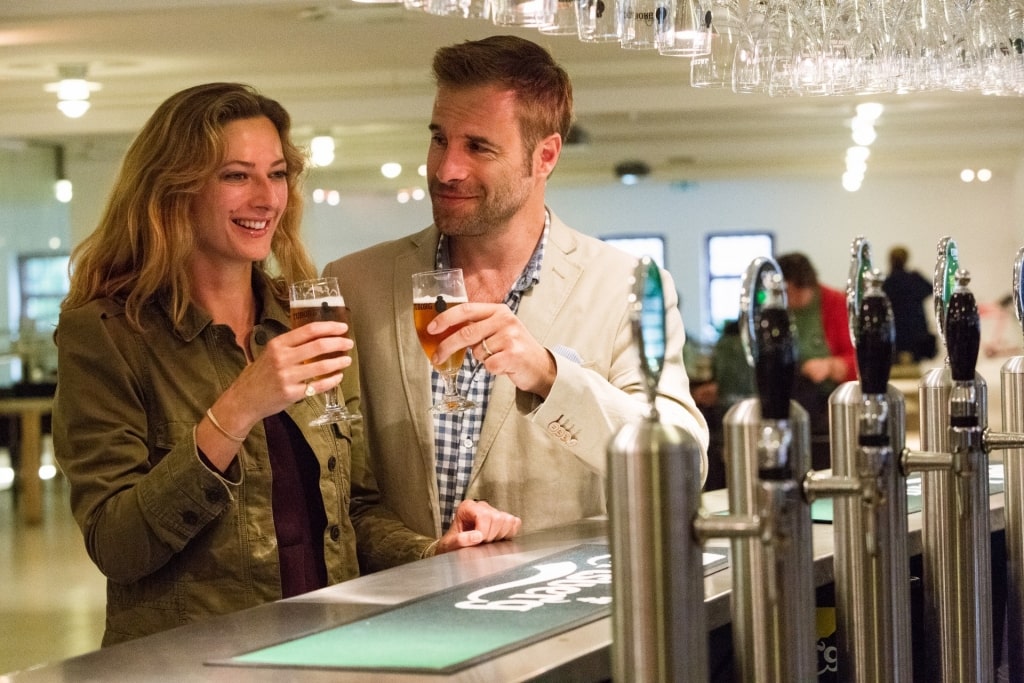
Carlsberg Brewery
Even if you’re not interested in touring the museum, a tasting of the beer in its birthplace is reason enough to visit, especially on a sunny day when you can forgo the trendy bar for the laid-back courtyard.
Venture to Frederiksborg Castle
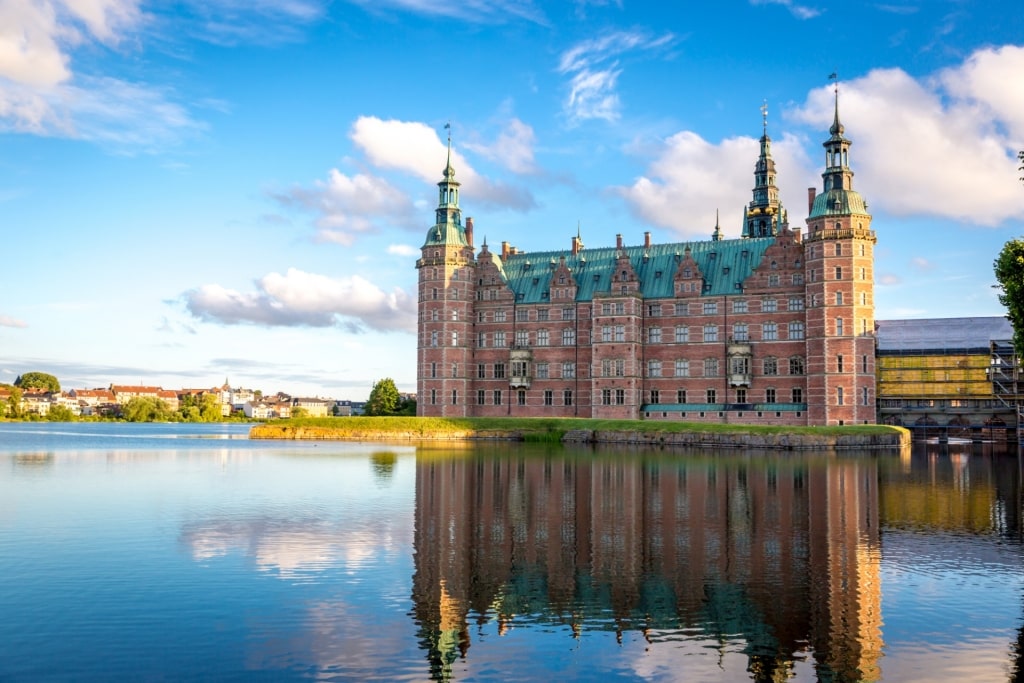
Frederiksborg Castle
North of Copenhagen, Frederiksborg is one of the largest Renaissance castles in Europe. An impressive palatial complex occupying three islands, it’s this spectacular setting, bound by lakes and symmetrical baroque gardens, that makes the palace worthy of a detour.
No expense was spared when constructing King Christian IV’s early 17th-century retreat. Yet, while the exterior is much the same as when it was inaugurated, the castle’s interiors were ravaged by a fire in 1859.
Thankfully, the philanthropist J. C. Jacobsen—yes, the founder of the Carlsberg Brewery—embarked on a costly and painstaking restoration project, returning Frederiksborg to its former glory. Now, it doubles as Denmark’s National History Museum.
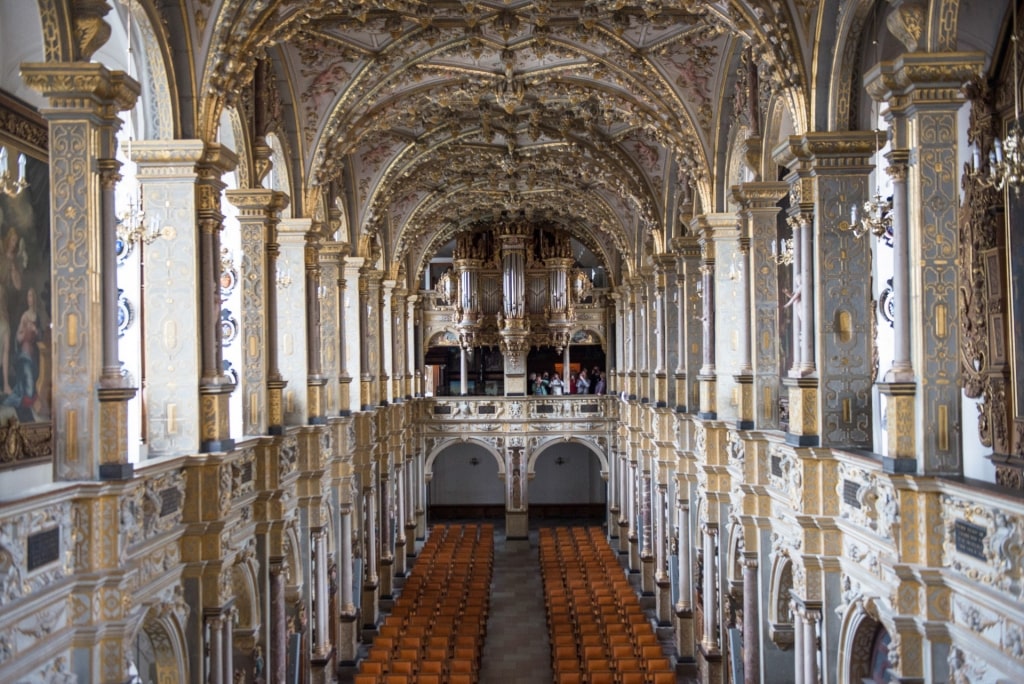
Private Chapel
Strolling the elegant and opulent hallways will take you past portraits of former kings and queens and through whimsical royal bedrooms. Stucco-ceiling passageways link together countless stately rooms, each more elaborate than the last.
The most astonishing are the gilded Great Hall and the almost preposterous Private Chapel, its original gold, silver and stucco ceiling unscathed by the fire.
See the Ny Carlsberg Glyptotek’s Diverse Collection
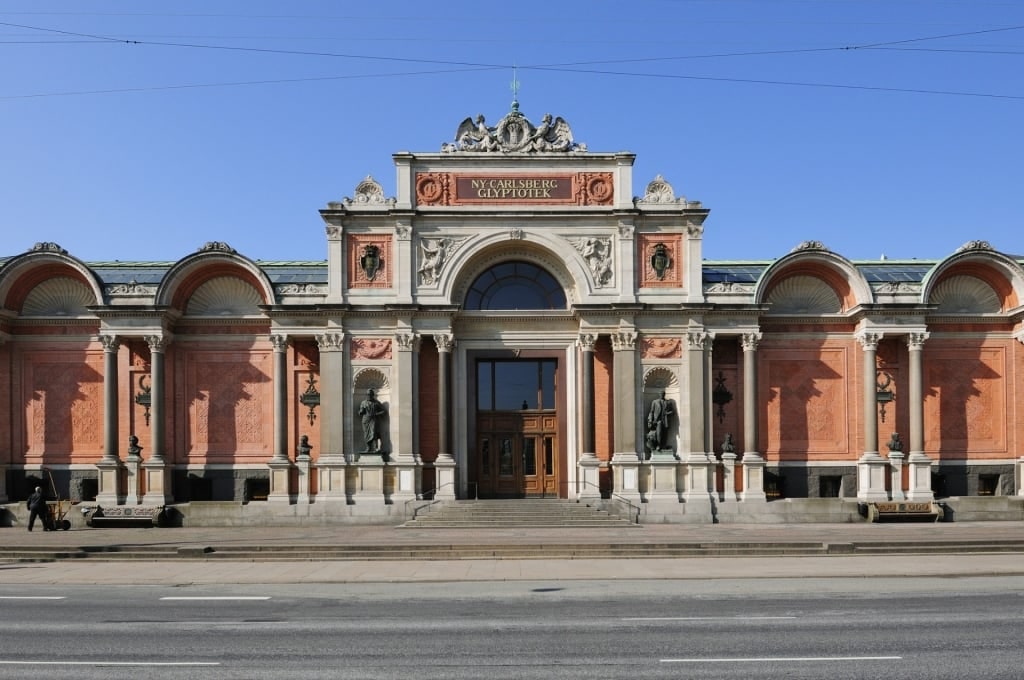
Ny Carlsberg Glyptotek
Housing the private art collection of Carl Jacobsen, the son of J. C. Jacobsen, the Ny Carlsberg Glyptotek has been considered one of Copenhagen’s best museums since its opening in 1907.
Quite the antiquarian, Jacobsen’s collection spans some 10,000 pieces. However, only a small subset of artworks are on display at any time. Vast and varied, the exhibition spans Danish sculptures, Etruscan artifacts, Greek marble marvels and French and Flemish masterpieces by the likes of Van Gogh. It’s a true cultural tour through the continent’s civilizations.
Relax in the Botanical Garden
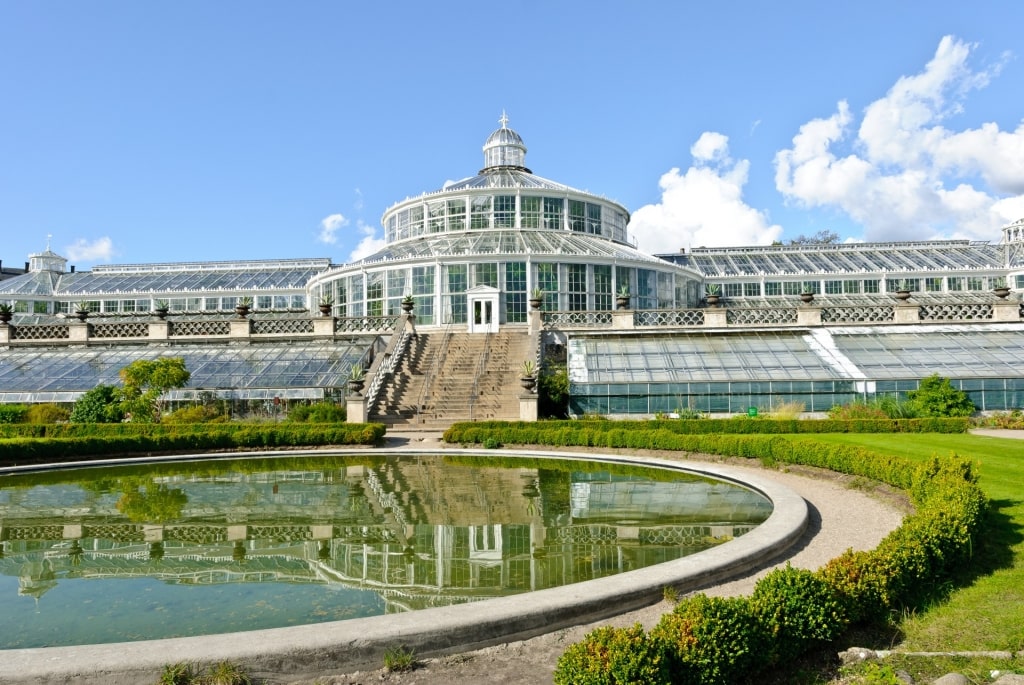
Botanical Garden
There is no shortage of green spaces in Copenhagen. In fact, many of the city’s old fortifications have been converted into parks, with former moats now serving as duck-friendly lakes.
Ørstedsparken and Østre Anlæg are two of the largest. Between the pair, you’ll find Copenhagen’s prettiest green space, the city’s expansive Botanical Gardens.
One of the most tranquil things to do in Copenhagen is to take a stroll here. Covering just shy of 25 acres, the gardens are embellished with over 1,000 types of native Danish flora, alongside imported species planted in the grounds and flourishing across 27 glasshouses.
The most impressive of the set is the Victorian-era Palm House. Inside the cast iron and glass structure, soaring palms, giant water lilies, and other tropical plants thrive. The smaller Butterfly House, with its orchids and kaleidoscope of fluttering insects, is a delightful place to pause during its summer opening months.
Head to the Top of CopenHill
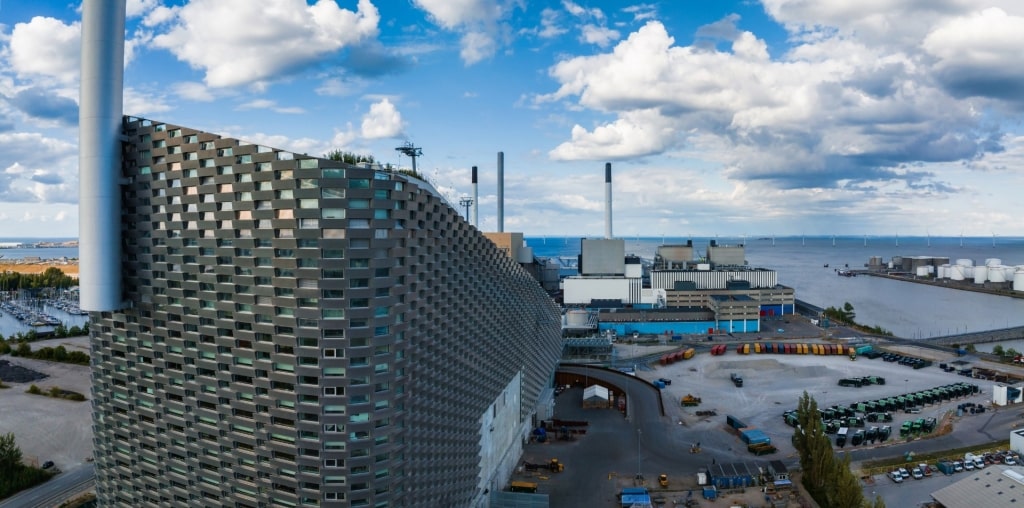
CopenHill
For an elevated overview of Copenhagen, head to the unique Amager Bakke, an artificial garden atop the slanted roof of a waste-to-energy power plant. Crowning the 279-foot-high plant, Copenhagen’s “Green Hill” opened to much buzz in 2017, supplying the city with not just a new energy source, but one of its most unusual spaces.
An urban hub for mountain activities, CopenHill is as much about city-center sports as admiring the skyline. There’s an array of climbing walls to tackle, and skating areas. But the main appeal is the selection of synthetic turf ski slopes designed to replicate snow-like conditions.
Alternatively, simply appreciate the “après ski” and panoramas from the café, often accompanied by live music.
Bathe or Beach
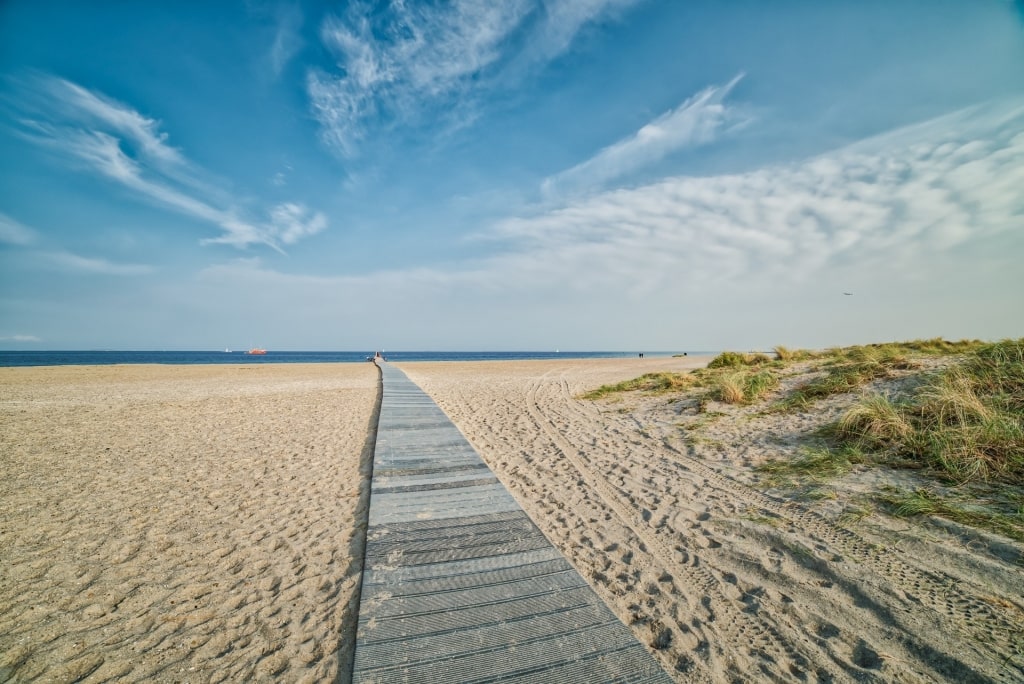
Amager Beach Park
If inner-city skiing isn’t appealing, urban swimming is another of Copenhagen’s favorite, heart-thumping pastimes. No matter the weather, taking a plunge is seemingly built into the DNA of fearless locals.
To partake in one of the healthiest things to do in Copenhagen, all the better if followed by a sauna, seek out one of the city’s harbor baths. Some of the most central spots to do so are at Islands Brygge’s Wooden Docks or pool-like Havnebadet Fisketorvet.
If you’d prefer a typical seaside experience, the sandbar-like Amager Beach Park is just south of the city. Water sports, sunbathing, and sea dips are possible either in the lagoon or Øresund Sound.
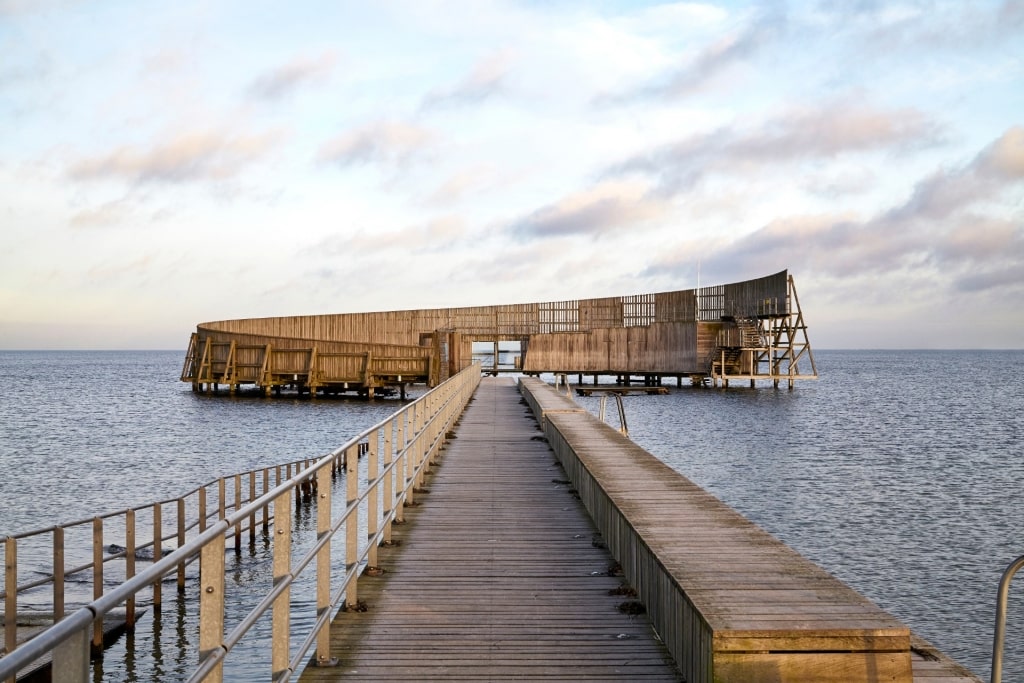
Kastrup Søbad
Alternatively, at the end of an extended boardwalk pier, you can dive into Kastrup Søbad’s seawater pool. Ringed by a wooden platform and equipped with showers, lockers, and changing rooms, it’s one of Copenhagen’s most popular bathing spots.
Step Back in Time at Dragør Village
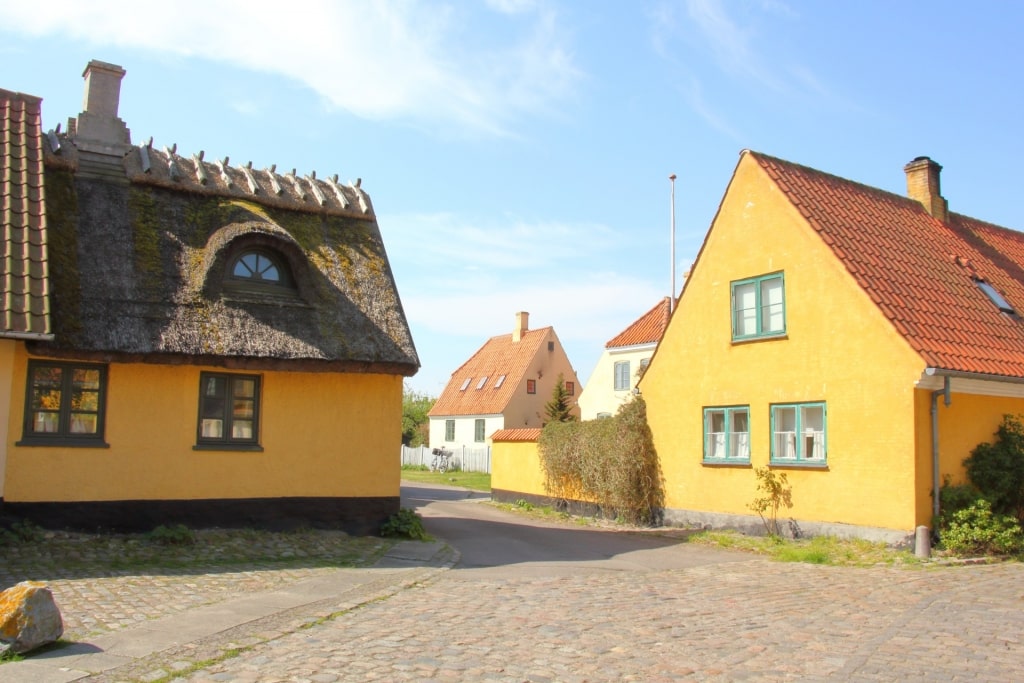
Dragør Village
Just 30 minutes from Copenhagen, the former fishing village of Dragør will take you back to a simpler time. Founded by a tiny fishing community in the 1300s, Dragør has expanded over the years. However, its old-world charm remains.
Half-timbered houses and thatched roof cottages line cobblestoned streets, tufts of grass climbing through the medieval carpet’s crevices. Fishing boats still bob around the harbor, hugged by colorful homes.
In the small but immersive museum, you can learn more about village and maritime life in the Middle Ages. It’s only a short hop from the city but a world away from the Copenhagen of today.
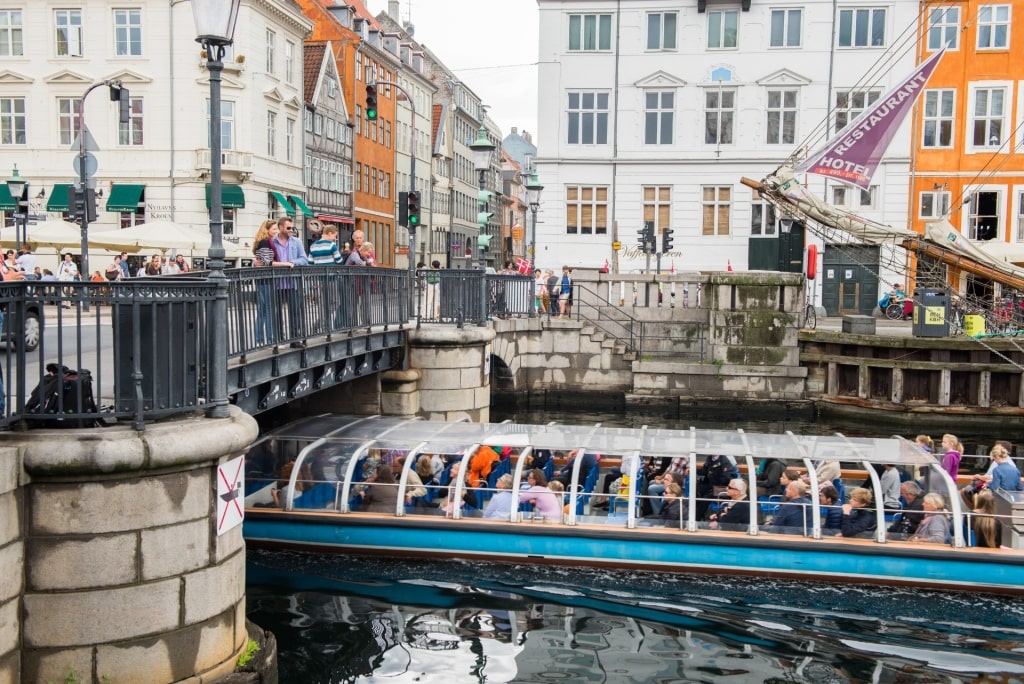
Copenhagen
Ready to experience Denmark’s captivating capital city yourself? Browse Celebrity’s Copenhagen cruises to plan your perfect Scandinavian vacation.
